The Hisense E8Q is a television that clearly draws heavily from the U7Q model – and that's a good thing. After all, it is its European version, not another "diet" mutation. Just a few moments with this screen reveal that the E8Q is trying to impress. And in many ways, it really succeeds. Right off the bat – what stands out: the black is deep, the contrast is high, and the brightness exceeds the threshold that we can simply call satisfying. Let's add to that almost perfect smoothness in tonal transitions, and we have an image that looks very mature, especially for this price segment. In gaming? Just as good. It supports VRR, ALLM, 144 Hz in 4K, and even 240 Hz in Full HD – it's hard to find fault here. Well… almost. Because the E8Q has one additional flaw compared to the U7Q – the sound. In our unit, even at moderate volume levels, the back of the casing started to resonate, generating quite unpleasant crackling noises. This might be a flaw in the test sample, but since the U7Q simply performed better – it's worth noting. Especially if you find both models at a similar price. We can confidently state that the E8Q is a television that can boldly compete for the attention of those looking for a quality Mini-LED at a reasonable price. If a good deal comes along, it's definitely worth it – because we get almost the same as with the U7Q. And that means a really solid picture, excellent gaming features, and overall very good equipment that you can stick with for a long time.
- Matching (Score)
- Our verdict
- TV appearance
- Where to buy
- Contrast and black detail
- HDR effect quality
- Factory color reproduction
- Color reproduction after calibration
- Smoothness of tonal transitions
- Image scaling and smoothness of tonal transitions
- Blur and motion smoothness
- Console compatibility and gaming features
- Input lag
- Compatibility with PC
- Viewing angles
- TV efficiency during daytime
- Details about the matrix
- TV features
- Apps
- Playing files from USB
- Sound
Hisense E8Q vs Philips OLED820
Direct compare
E8Q
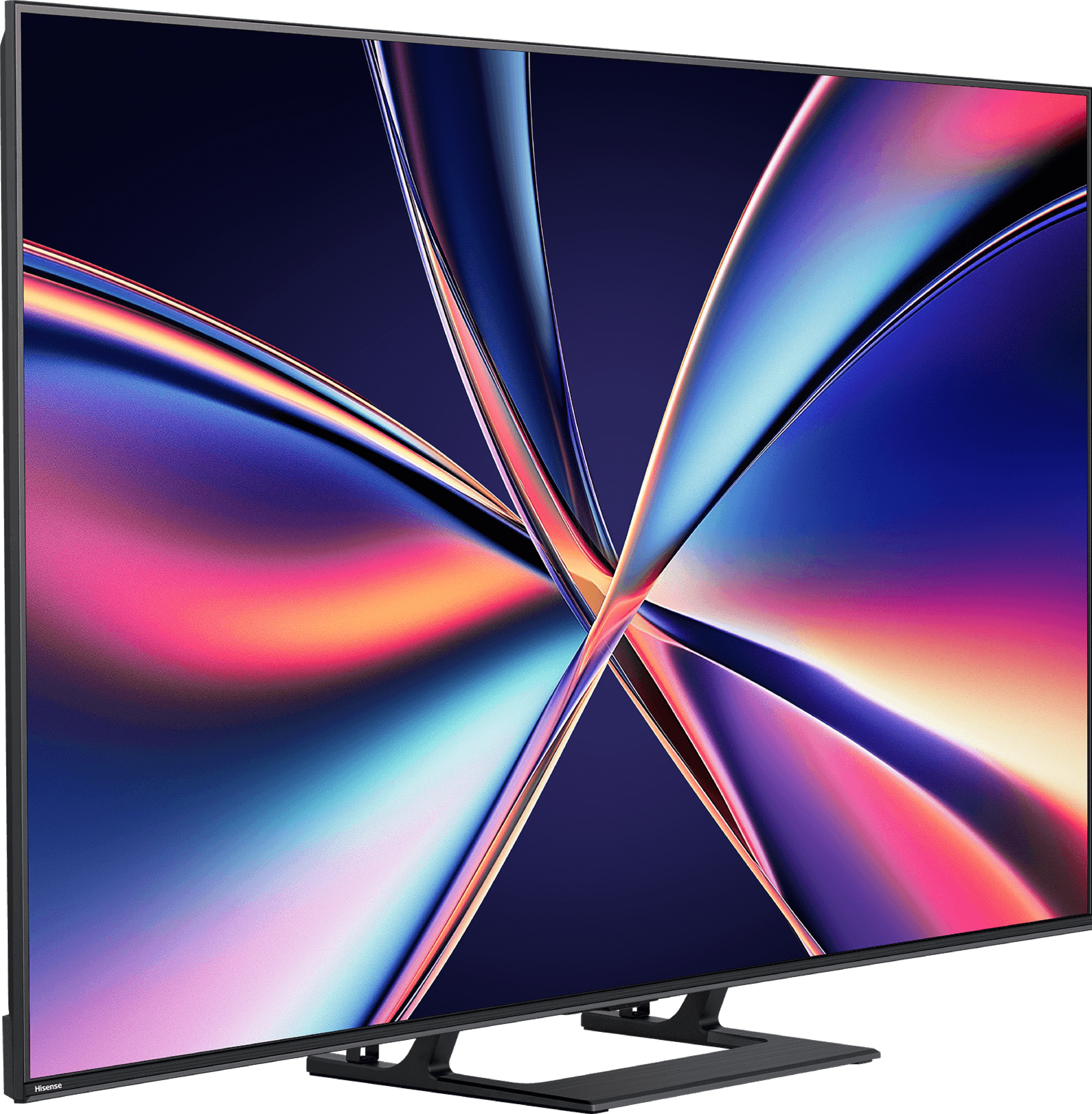

Panel type: LCD VA
Resolution: 3840x2160
System: VIDAA
Model year: 2025
Complete the survey to find out the result

Panel type: WRGB OLED
Resolution: 3810x2160
System: Google TV
Model year: 2025
Complete the survey to find out the result

Overall rating
7.2
8.0
Movies and series in UHD quality
6.7
8.3
Classic TV, YouTube
6.8
8.6
Sports broadcasts (TV and apps)
6.5
8.5
Gaming on console
8.0
9.4
TV as a computer monitor
8.6
6.5
Watching in bright light
6.2
5.7
Utility functions
8.9
6.8
Apps
7.7
9.6
Sound quality
7.2
7.7
Complete the survey to find out what fits your preferences
Advantages
Great contrast and deep black
Very good fluidity of tonal transitions (close to reference level)
High brightness
Support for 4K 144 Hz and even 240 Hz in Full HD
VRR, ALLM, G-SYNC – a complete package for gamers
Low input lag
Many classic TV features built into the VIDAA system
Ideal contrast and black thanks to the WOLED panel
High HDR brightness (up to 1300 nits) and wide coverage of the DCI-P3 color palette (99%)
Support for multiple HDR formats including Dolby Vision and HDR10+
Great motion fluidity, no motion blur, refresh rate up to 144 Hz
Full support for gamers: HDMI 2.1 (2 ports), VRR, ALLM, HGiG, Dolby Vision in games, low input lag
Ambilight, which realistically affects image perception and distinguishes the TV from the competition
GoogleTV system with a huge app base and great voice assistant
Extras in the form of: Backlit remote and rotating stand
Support for Dolby Atmos and DTS:X audio formats
Disadvantages
No support for HGiG (makes HDR setup difficult on consoles)
U7Q
Only two HDMI 2.1 ports (with 2 consoles and a soundbar, we are forced to "juggle" the cables)
Lack of many classic "TV" features, e.g., USB recording or PiP mode, the infrared remote can be annoying
Slight issues with color matching (much better than last year but far from the competition)
Font readability issues when working with PC (lack of full Chroma 4:4:4 support)
Our verdict
The Philips OLED820 is a very successful and significant step forward compared to last year's model, the OLED 819. For many people, the main reason for purchasing it will, of course, be Ambilight: the multi-colored lighting system that sets Philips TVs apart from the competition. It’s no surprise, as it made a huge impression on us as well. It's not just an impressive gadget, but a real addition that can change the perception of the content being watched and add depth to it. However, Ambilight should not overshadow what the OLED820 offers as a screen. Here we have almost infinite contrast, high brightness in HDR films, and excellent color reproduction, which improves even more after slight tweaking or professional calibration. This setup guarantees one of the best pictures available on the market today, and we are also aware that the TV offers something unique and unprecedented elsewhere. It is also equipment that works well for gaming. A 144 Hz panel and HDMI 2.1 ports open up access to the full capabilities of new-generation consoles, and low input lag makes gameplay exceptionally responsive. The operating system also deserves praise – Google TV. This is a much better solution than the proprietary Titan OS found in lower-end Philips models, such as the OLED770. And this is a serious argument for paying extra for this model. A larger app library, a more efficient voice assistant, and fewer system errors contribute to a noticeably better everyday experience. Of course, the Philips OLED 820 is not free from minor shortcomings – some software issues are apparent, and certain features could be better refined. Nevertheless, the overall presentation is very solid. Perhaps the OLED820 is not a revolutionary TV, but it is a very successful and well-balanced option in Philips’ lineup. It combines excellent picture quality, a complete set of features for gamers, and a unique addition in the form of Ambilight. If you’re looking for a solid mid-range OLED that not only offers good picture quality but also something distinctive and exceptional, the OLED820 should be high on your shopping list.
TV appearance
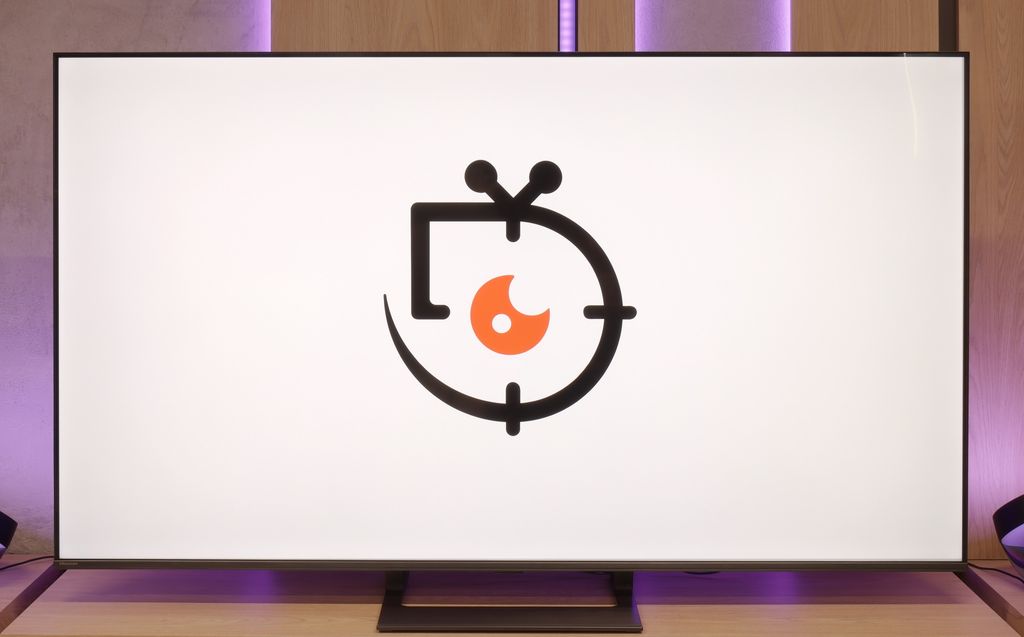
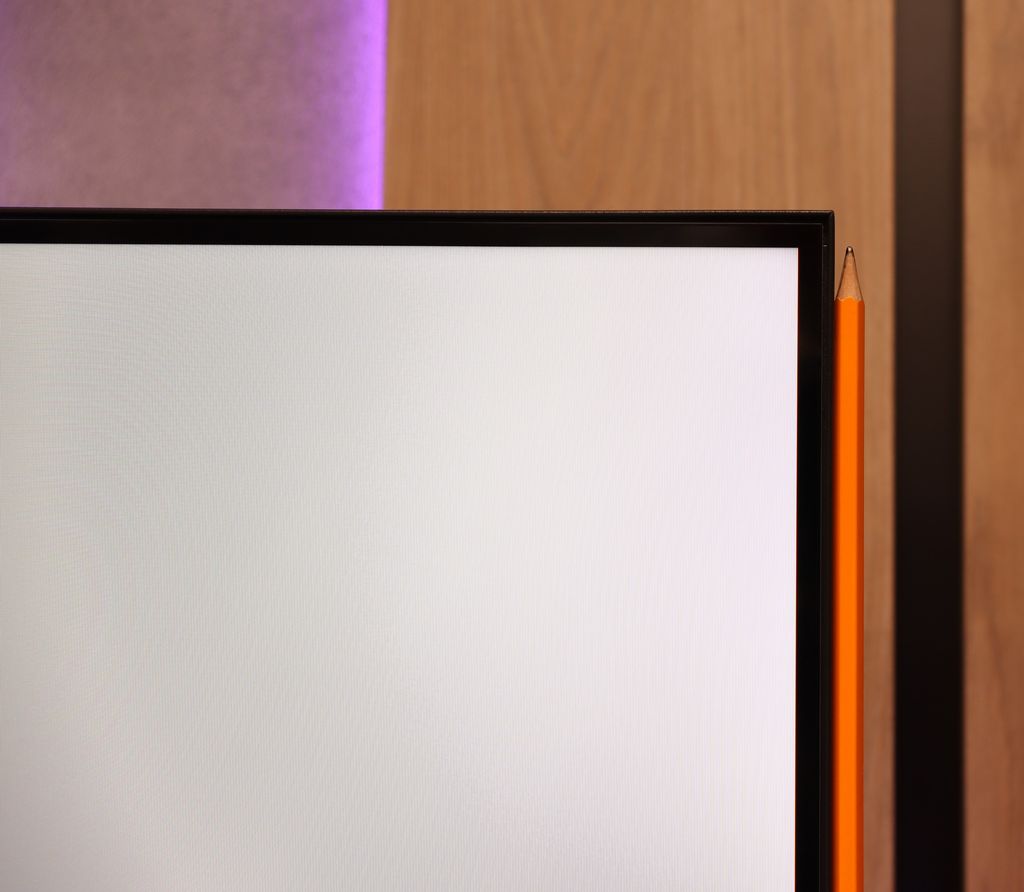
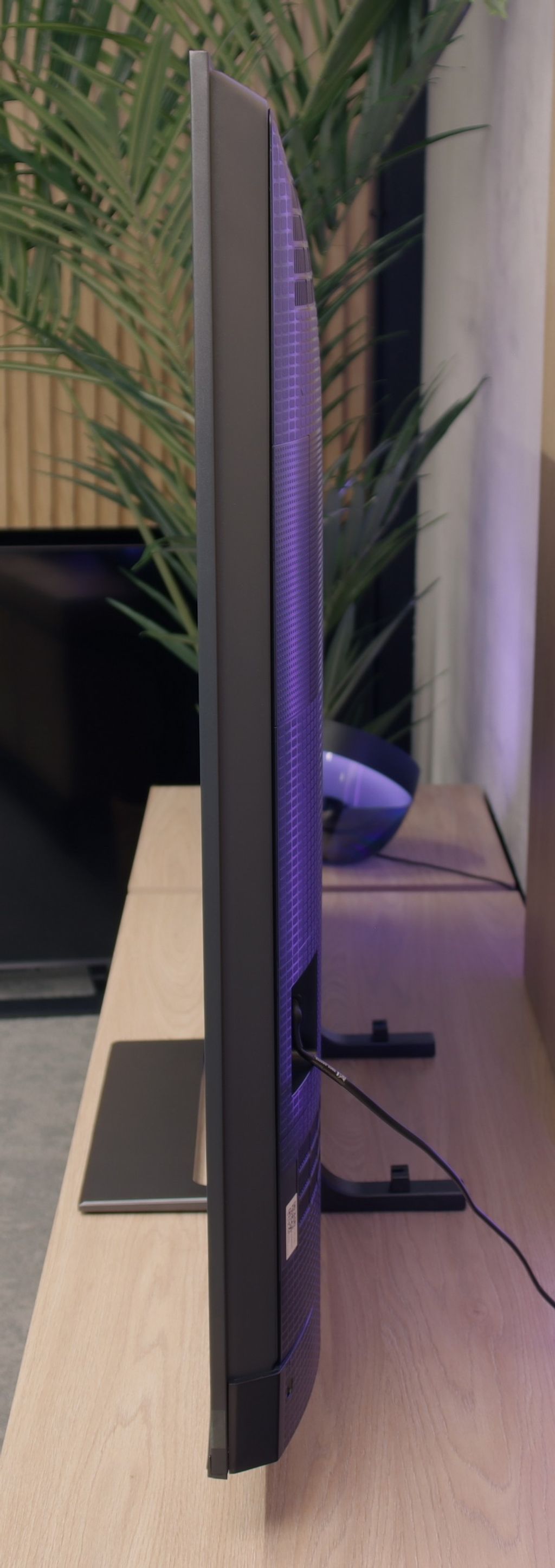
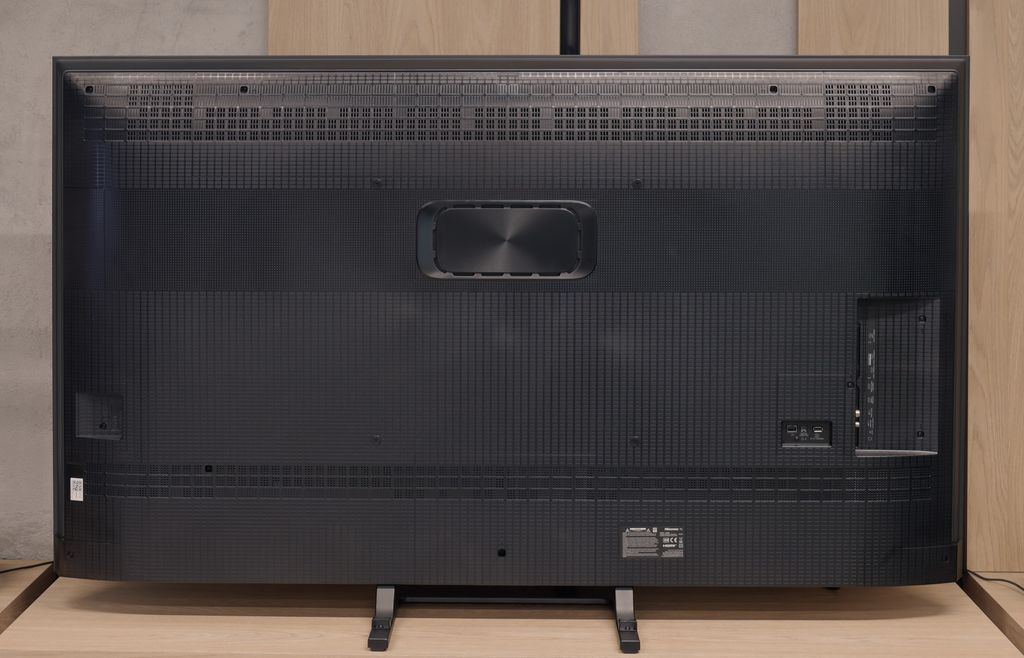




Contrast and black detail
7.6/10
10/10
Local dimming function: Yes, number of zones: 220 (10 x 22)
Contrast:

Result
277,000:1

Result
43,700:1

Result
15,750:1

Result
8,850:1

Result
6,350:1

Result
∞:1

Result
∞:1

Result
∞:1

Result
∞:1

Result
∞:1
Halo effect and black detail visibility:
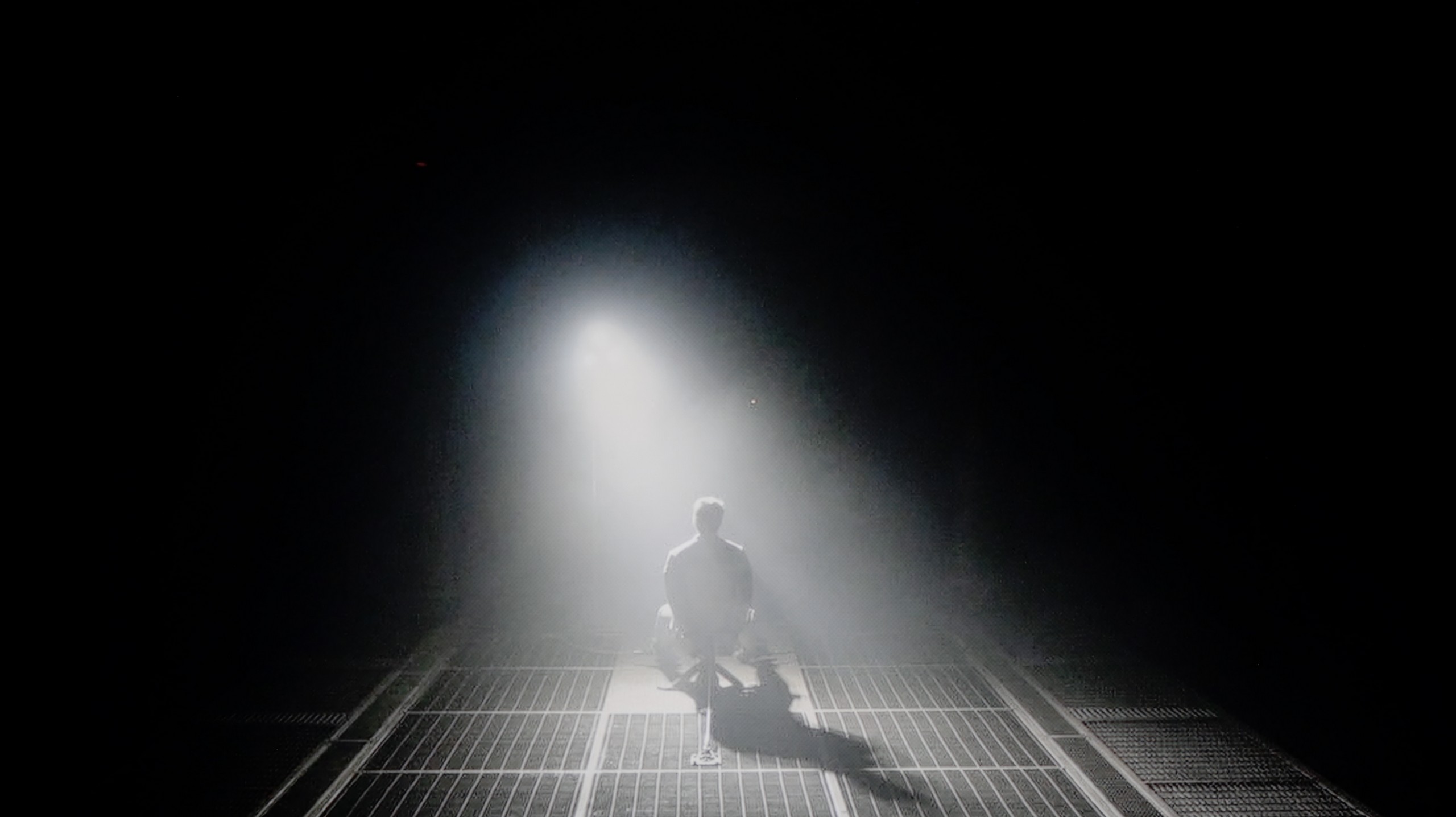

Similarly to the U7Q, the E8Q model uses a VA panel and Mini-LED backlighting. The number of dimming zones also remains at a very similar level – in the 65-inch variant we tested, we counted 220 zones, which is exactly the same as in the U7Q. On paper, this looks really good for this price segment, but even better – in practice. The contrast is high, and black can be really deep. In many scenes, the lights are clearly separated, and the image gains in spaciousness. This is one of those cases where Mini-LED shows it can approach the quality of OLEDs – provided that we are aware of the limitations we need to consider. In very difficult scenes, there may be slight lightening or minor halo effects around bright objects, but these are phenomena typical of this technology and are not very noticeable. Ultimately – the contrast and blacks in the E8Q are really solid, almost identical to those in the U7Q model. It’s hard to find fault with this, especially when we look at the price of the television.
Contrast and black are the domain of OLEDs, and the Philips OLED820 is no exception. The WOLED panel from LG Display works the same as in the LG C5 models or the Samsung S90F, providing exactly what we expect – perfect black and infinite contrast. Whether we are watching challenging scenes full of fine details or simpler frames flooded with uniform black, the television always performs excellently. It separates light from darkness with surgical precision, creating an extraordinary sense of depth in the image. And while different technologies can be debated, in this category, OLED simply reigns, and the Philips OLED820 only confirms this rule.
HDR effect quality
4.5/10
7.5/10
Luminance measurements in HDR:

Result
531 nit

Result
148 nit

Result
320 nit

Result
100 nit

Result
625 nit

Result
1035 nit

Result
1235 nit

Result
1356 nit

Result
1315 nit

Result
521 nit
Scene from the movie “Pan” (about 2800 nits)


Scene from the movie “Billy Lynn” (about 1100 nits)


Static HDR10


Dynamic: Dolby Vision
Dynamic: Dolby Vision


HDR luminance chart:
Philips OLED820
HDR luminance
Luminance of RGB colors
Hisense E8Q
HDR luminance
Since the E8Q is a twin of the U7Q, it’s no surprise that the quality of the HDR effect is almost identical. On paper, it looks promising – a peak brightness of 800 nits can impress in many scenes. Fragments like the flashes of light in “The Meg” or shots of the sun in “Life of Pi” can indeed evoke a “wow” effect. But the longer we watch, the more we notice the limitations. The problem arises when small, bright details are supposed to be displayed on a dark background. In such situations, the dimming algorithms try to preserve contrast but end up dimming what should shine the brightest. Instead of dazzling details, we get almost invisible points of light. This is typical for Mini-LED in this price segment and is not surprising – but it’s worth knowing that the HDR effect won't always be fully preserved. Fortunately, the color reproduction offers reasons to be satisfied. A coverage of the DCI-P3 color gamut at around 94% is a very good result, and the applied quantum dot layer (more specifically, PFS) does its job – colors are saturated and vibrant, especially with 4K content.
When it comes to HDR quality, the Philips OLED820 uses the same class of WOLED panel that we find in its biggest competitors – LG C5 or Samsung S90F. This means we can count on truly solid performance. This year, mid-range OLED panels are capable of exceeding the threshold of a thousand nits, and the model tested reaches around 1300 nits in some films. This is an outstanding result that allows for an extremely precise depiction of the director's vision, as contemporary productions are mastered in such brightness ranges. Of course, there are situations where even the OLED820 has to compromise. Full-screen scenes flooded with white, like those in the movie The Meg, can drop brightness to 400–500 nits, which clearly weakens the effect. This is a characteristic of OLED technology that has not yet been fully eliminated. Despite this limitation, it is hard not to appreciate the HDR in this model – high luminance and wide coverage of the DCI-P3 color gamut at 99% make the picture simply look great.
Factory color reproduction
6.5/10
6.7/10
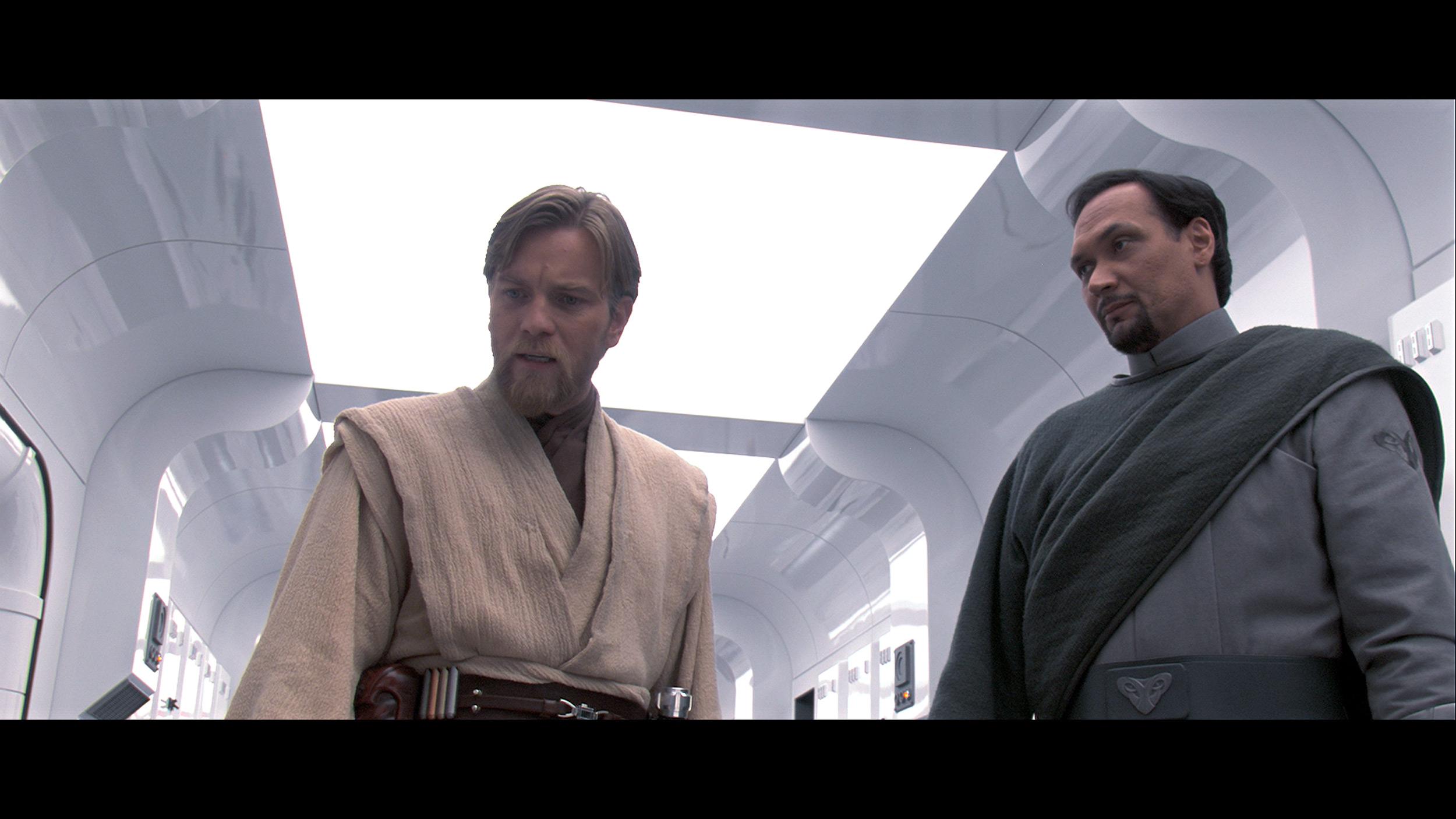

Factory Mode
After calibration


Factory Mode
After calibration
Testing the Hisense E8Q in Filmmaker mode, we were hoping for a neutral image close to the director's vision. Unfortunately - although on paper it doesn't look bad (the color reproduction errors are not significant), in practice the image feels somewhat unnatural. The reason? Too strong an increase in blue and a lack of red in the white balance. The effect? The scenes look cool, and the white appears slightly bluish. Alongside the U7Q model, we also noticed a specific approach to brightness management here. The brightness reproduction curve for HDR content (EOTF) shows that the TV can significantly dim small, bright elements of the screen to maintain contrast - but sometimes it goes too far. On the other hand, it can excessively brighten larger, very bright parts, which disrupts tonal balance. This is a compromise that may not suit everyone – especially if you want an as faithful image as possible right out of the box.
The color reproduction in the factory settings really surprised us, and positively so. The Philips OLED820, switched to Filmmaker mode, immediately showed that it was quite well tuned in terms of color. The white balance was relatively accurate, though with a slight lack in the blue hue, which sometimes gave the image a slightly yellowish tint. However, this is not a flaw that particularly interferes with everyday viewing. A larger problem arose with the brightness characteristic. The gamma chart clearly deviated from the ideal, with the line being below the expected values, causing the image to be overly brightened, and the colors looked as if they were covered with a light milky filter. This effect was also noticeable in tests using the Colour Checker pattern, where more pronounced errors appeared.
Color reproduction after calibration
7.4/10
9.3/10


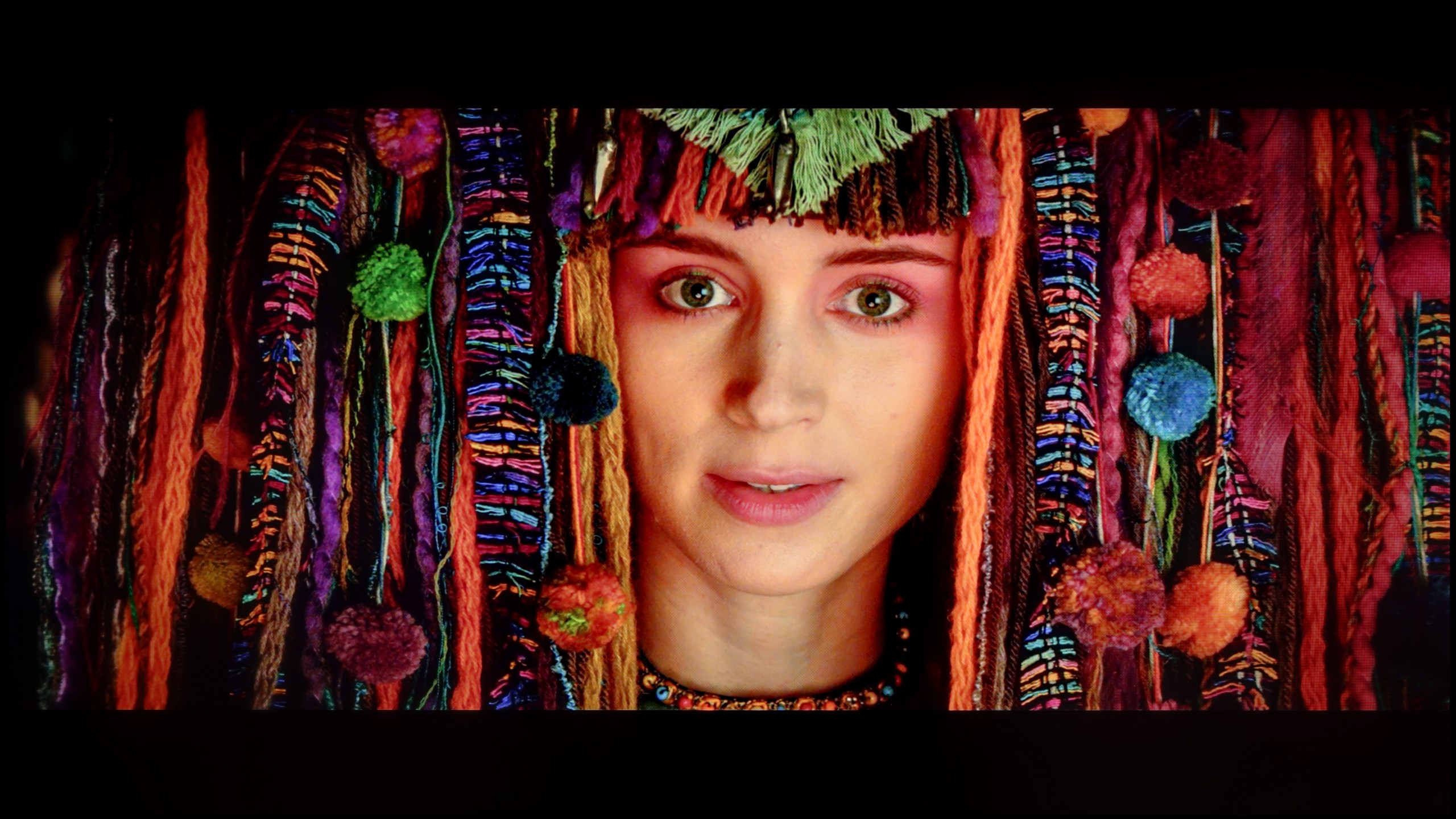

The calibration of the Movie mode brought really good results, especially regarding SDR content. The white balance was successfully adjusted, which gave the image a natural look – it appeared almost reference-level. The colors were well-saturated, and the overall perception of the content improved significantly. Unfortunately, when we moved to HDR materials, the well-known problems from the U7Q model returned. The TV still tends to “do things its own way,” which is evident from the analysis of the EOTF brightness characteristic – despite calibration, the E8Q still dimmed small details in the shadows, while the bright areas of the screen could sometimes be excessively boosted. In practice, this means that in darker scenes, some of the tiniest details could simply disappear. Although it must be admitted that the entire calibration process brought a lot of good, not everything can be circumvented – even with the use of professional tools. The E8Q can impress with its picture, but in HDR content, its design limitations become noticeable, and it is worth keeping this in mind.
After calibration, both the Filmmaker mode and the game mode gained quite a lot. A slight adjustment of the white balance and an improvement in brightness characteristics resulted in excellent outcomes for SDR content – the image looked almost perfect, natural and very close to the reference. In the case of HDR materials, the situation was similar; the colors looked stunning and it was hard to find anything to criticize. However, we noticed a certain feature that we had already pointed out when comparing scenes from the movie Billy Lynn. An analysis of the EOTF curve revealed that the television has a slight tendency to dim details in the blacks, which means that the darkest sections are not always displayed exactly as the director intended. Nevertheless, the effect after calibration is remarkable, and the OLED820 stands out as one of the more interesting screens in its class. It just needs a little bit of fine-tuning, and there's really nothing to be afraid of.
Smoothness of tonal transitions
9.9/10
6.5/10






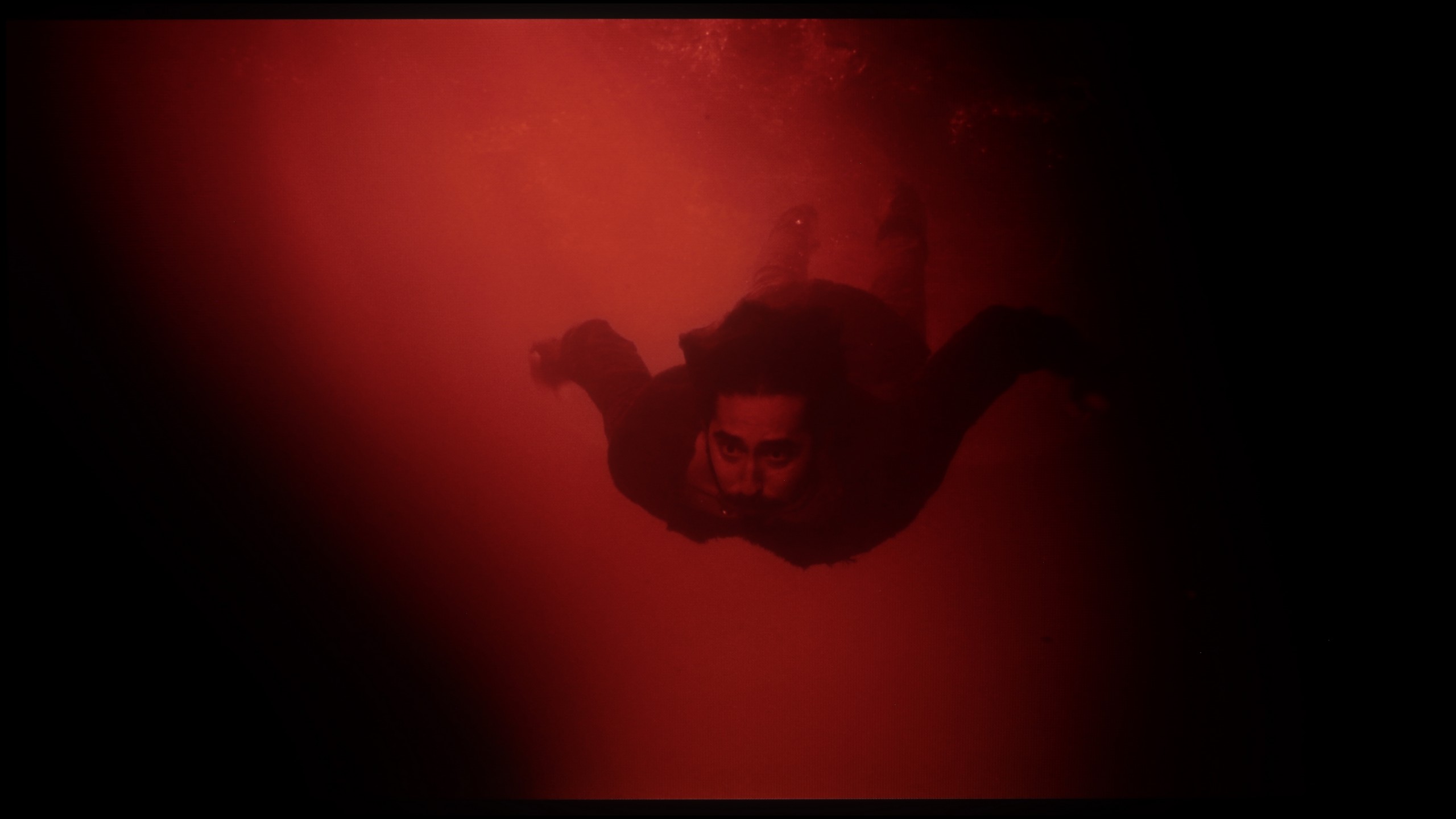





In this category, the Hisense E8Q truly shows its class. The transitions between colors are very smooth, with no "banding" or clear boundaries between tones. The image looks natural, and the color gradient is exceptionally well-executed – even in more difficult scenes. If there are any minor imperfections, they are subtle enough that they don't stand out. It's hard to find fault here – it looks almost exemplary.
The fluidity of tonal transitions is unfortunately the Achilles' heel of the Philips OLED820. During tests, we noticed slight issues with color blending – both in bright and darker scenes, one can see characteristic banding, which detracts from the naturalness of the image. It must be admitted that compared to last year's OLED 819 model, there is a significant improvement, but nonetheless, the competition performs better in this category.
Image scaling and smoothness of tonal transitions
6/10
7/10
Smooth transition function
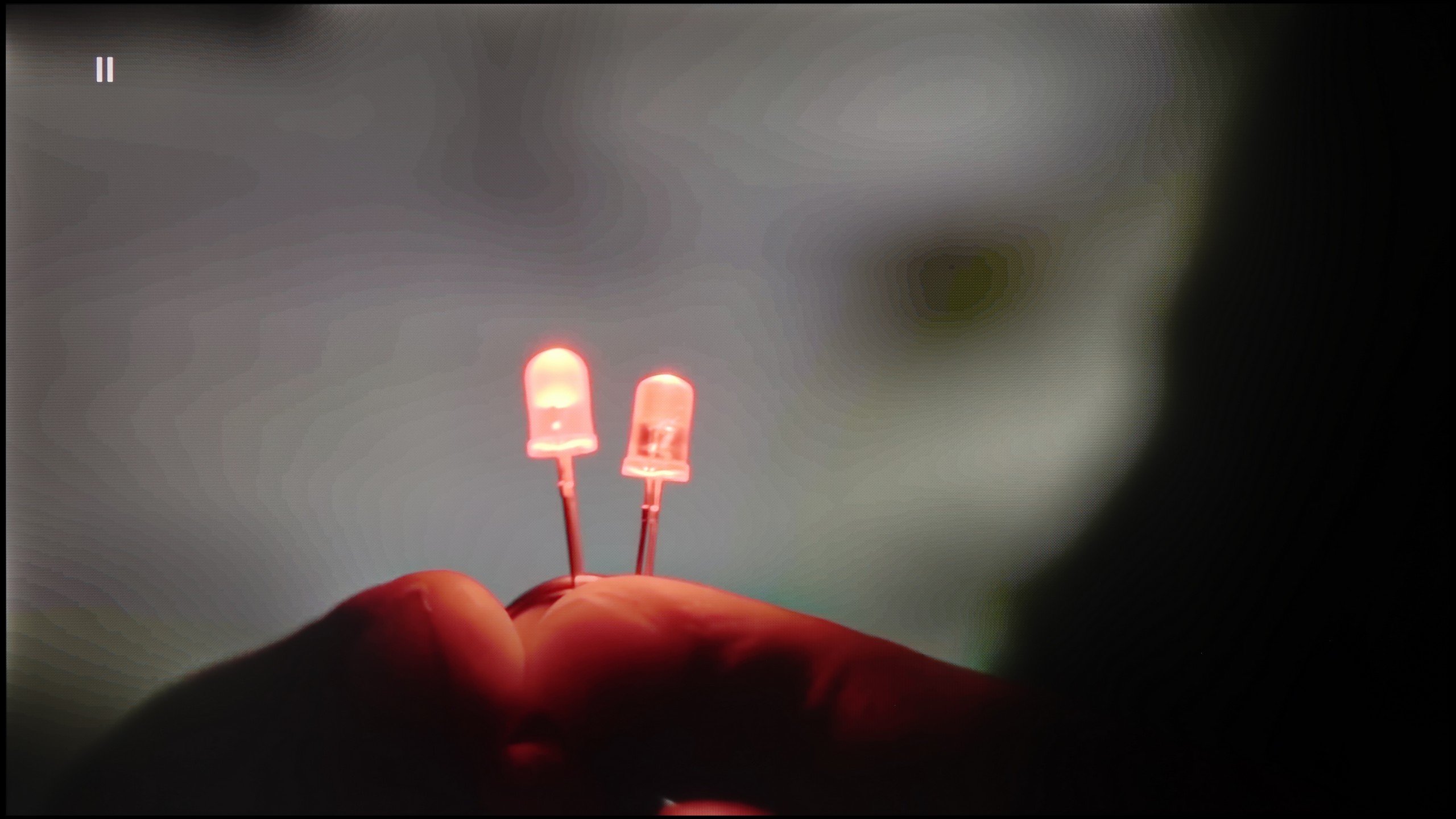

Image without overscan on the SD signal


In the case of older materials with lower quality, a gentle smoothing of tonal transitions is often useful. The Hisense E8Q, like the U7Q, has the "Smooth and Gradient Picture" feature, but unfortunately, its effectiveness leaves much to be desired. The “Low” setting is almost imperceptible in operation, while higher settings simply blur details instead of improving transitions. The good news is that the feature does not compromise the film grain, which allows it to maintain the image structure. On the plus side, the scaling is commendable. The television can fairly sensibly transform older content to a higher resolution—without artificially emphasizing contours or excessive sharpening. Though it does not match the best models in this category, it performs quite well for its class.
Fortunately, the earlier effects of the aforementioned posterization can be quite effectively mitigated. The "distortion reduction" feature set to medium handles unwanted color banding, improving the smoothness of tonal transitions. It does happen, however, that it works a bit too aggressively and smooths out some details – such as minor skin imperfections of the actors – but despite this, it can be considered worth using without major compromises. The upscaling in the OLED820 also performs well. The test image with the model is exceptionally soft, sometimes even too much so, although this can be alleviated by slightly increasing the sharpness in the picture menu – it’s a matter of personal preference. The lack of overscan issues with very low-resolution content is also commendable, meaning we don't have to worry that the image will be unnecessarily cropped.
Blur and motion smoothness
7.5/10
8.5/10


Blur (native resolution, maximum refresh rate):
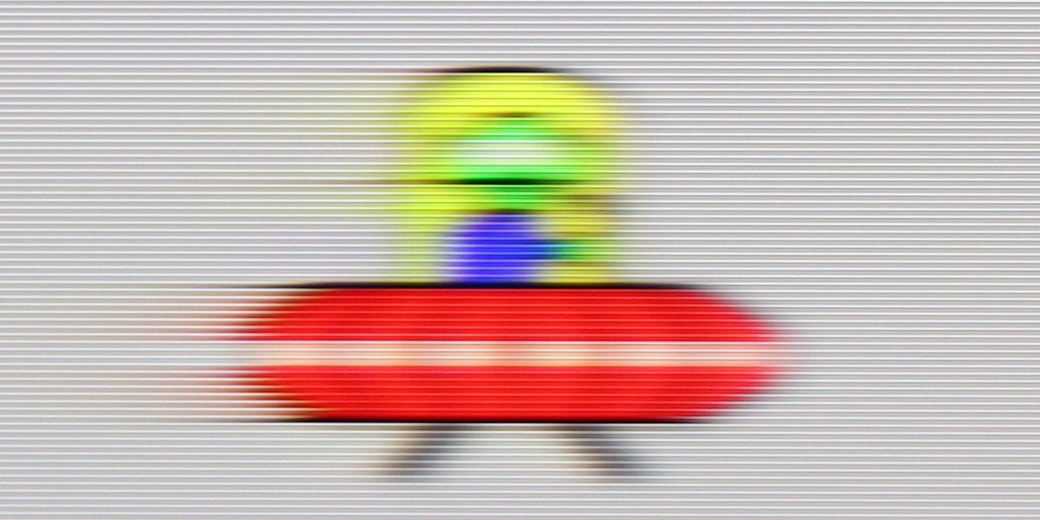
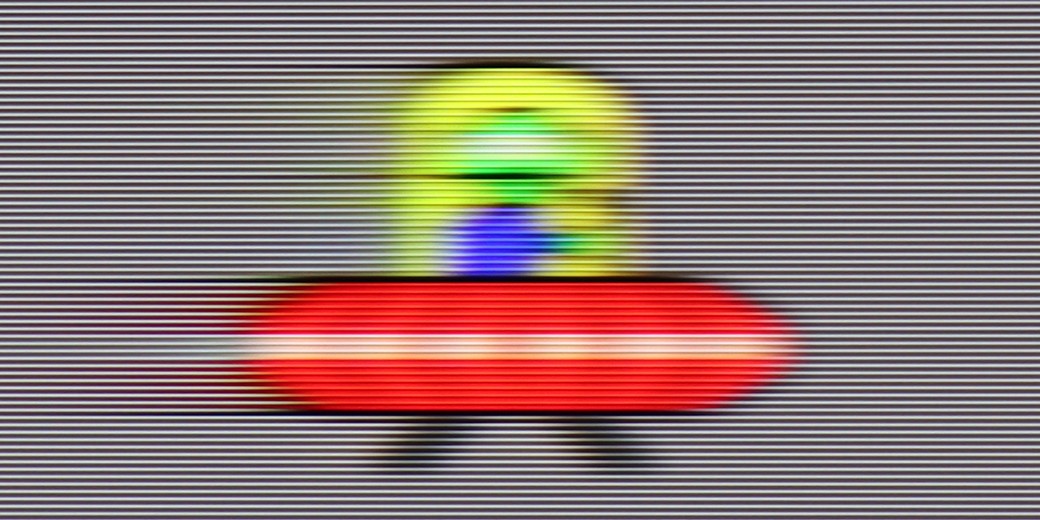
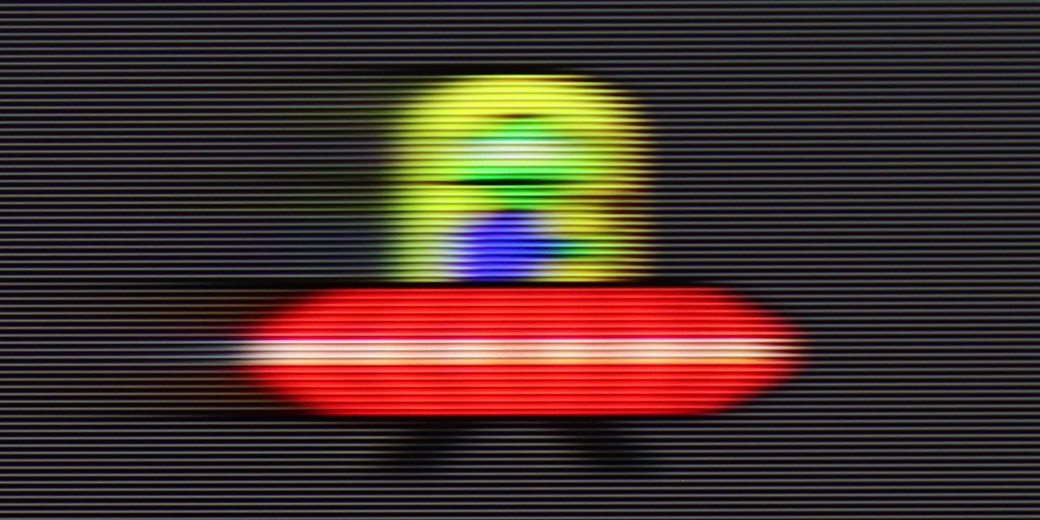



Blur (BFI function enabled):
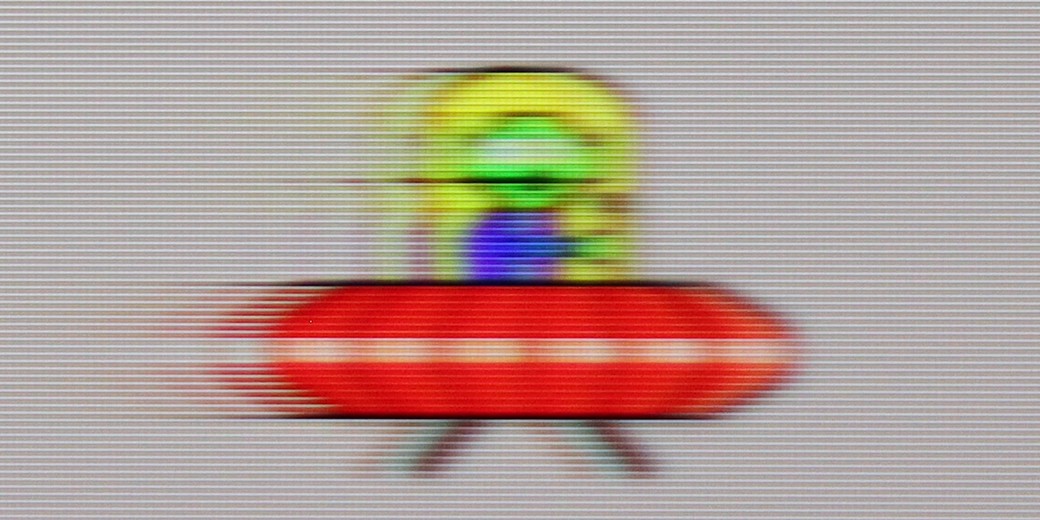

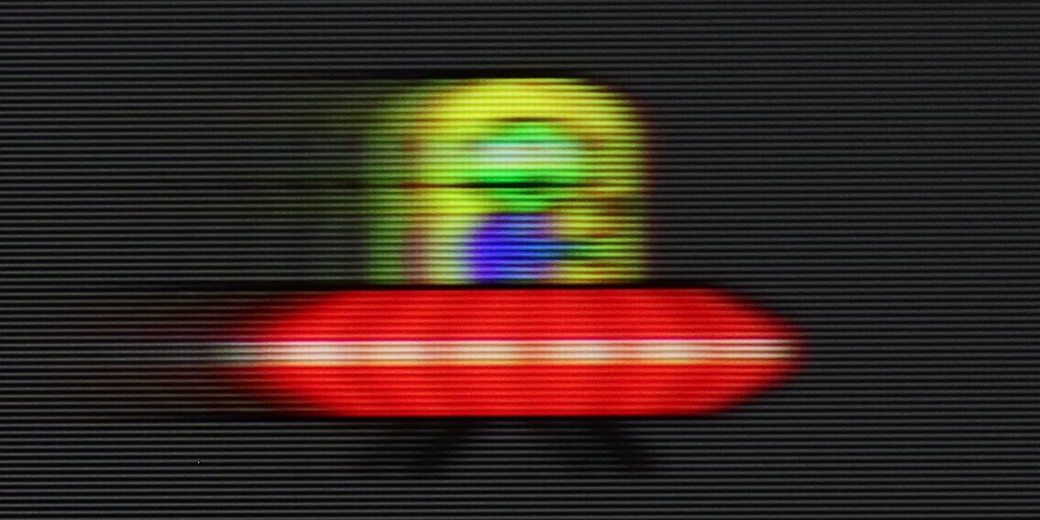
Smużenie (4K 120Hz):
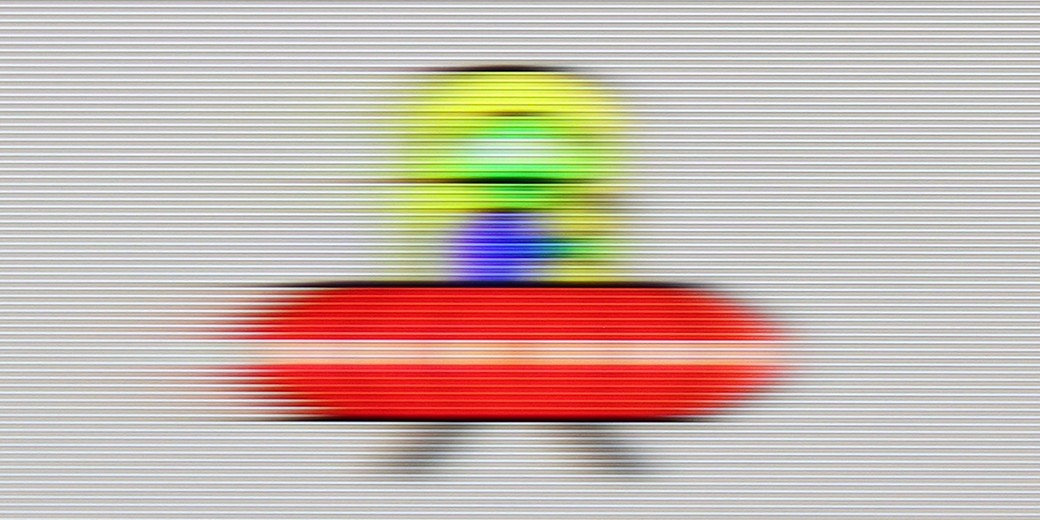
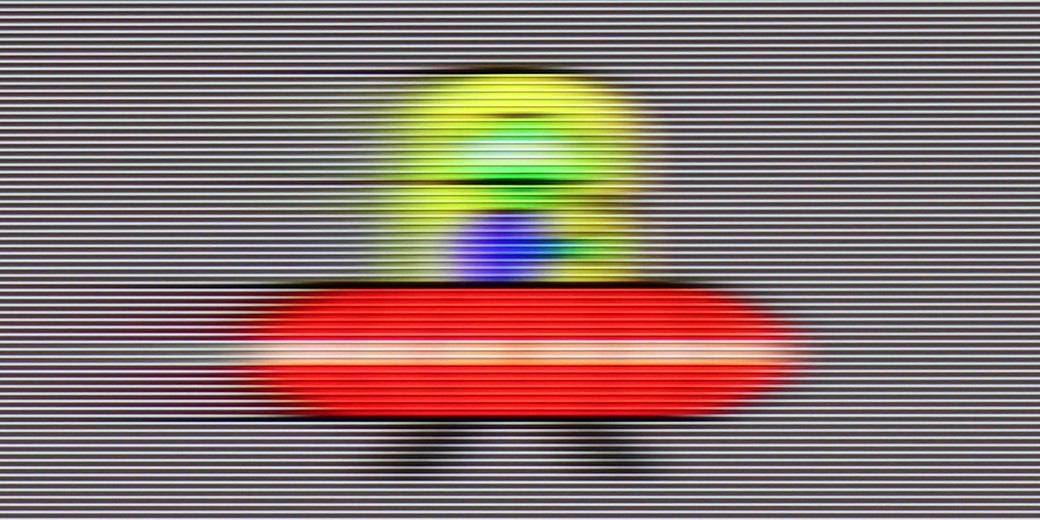
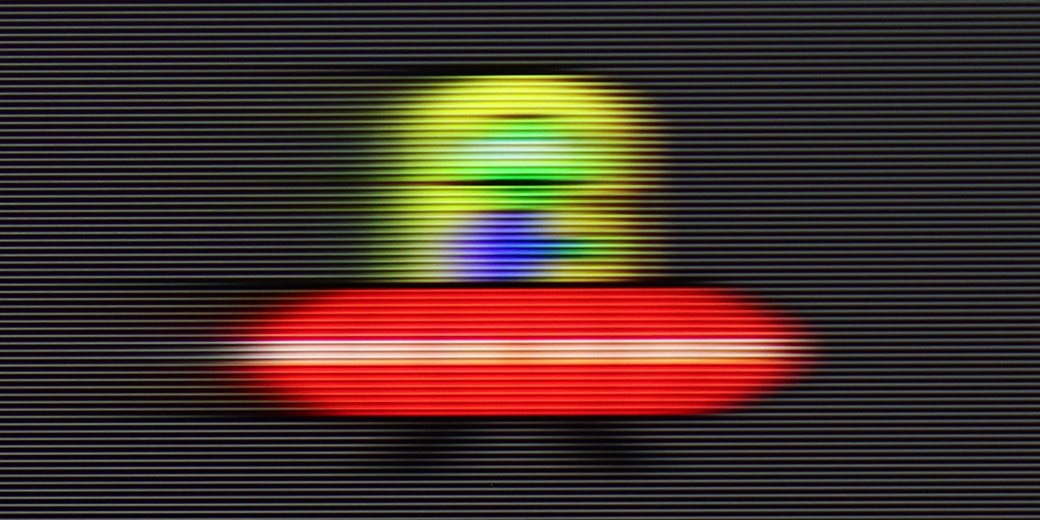
Smużenie (4K@144Hz):



Like the U7Q, the E8Q model is a fast television designed for dynamic content. It supports 144 Hz refresh rates in 4K resolution, and if for some reason someone is still gaming in Full HD, it can achieve even 240 Hz. This is a significant advantage, especially for PC users looking for maximum fluidity. In everyday use, the television performs very well. The "Ultra Motion Smoothness" mode provides us with two sliders, allowing for personalized image settings – whether it’s more cinematic with preserved film frames or heavily smoothed, almost "series-like." It’s good that the manufacturer gives a choice here instead of imposing one style. On sports materials, live broadcasts, or in games – motion appears clean and stable. Sure, it’s not at the level of OLEDs, but for this price range, the E8Q performs really well.
Motion fluidity is an area where OLEDs always shine, and the Philips OLED820 confirms this rule. The panel itself offers a refresh rate of 144 Hz, which will mainly benefit PC gamers, but even with standard television sources or consoles, where 120 Hz is used, the motion is fast, sharp, and simultaneously smooth, without traces of ghosting. This is thanks to the outstanding response time between pixels, which ensures the image retains clarity in every dynamic scene. The manufacturer has also added its own smoothing feature called "Motion Style." In the menu, we find two sliders – the first, responsible for fluidity, allows us to adjust the amount of artificially added frames in movies. This way, we can choose a raw, cinematic character with a clearly visible film frame or a more theatrical image with smooth motion. The second slider is for reducing blurring, especially useful in sports broadcasts. Here, we definitely recommend setting it to the maximum value, as the effect is truly excellent.
Console compatibility and gaming features
8.5/10
9.8/10
- ALLM
- VRR
- VRR range48 - 240Hz48 - 144Hz
- Dolby Vision Game Mode
- Correct implementation of HGIG
- 1080p@120Hz
- 1440p@120Hz
- 4K@120Hz
- Game bar
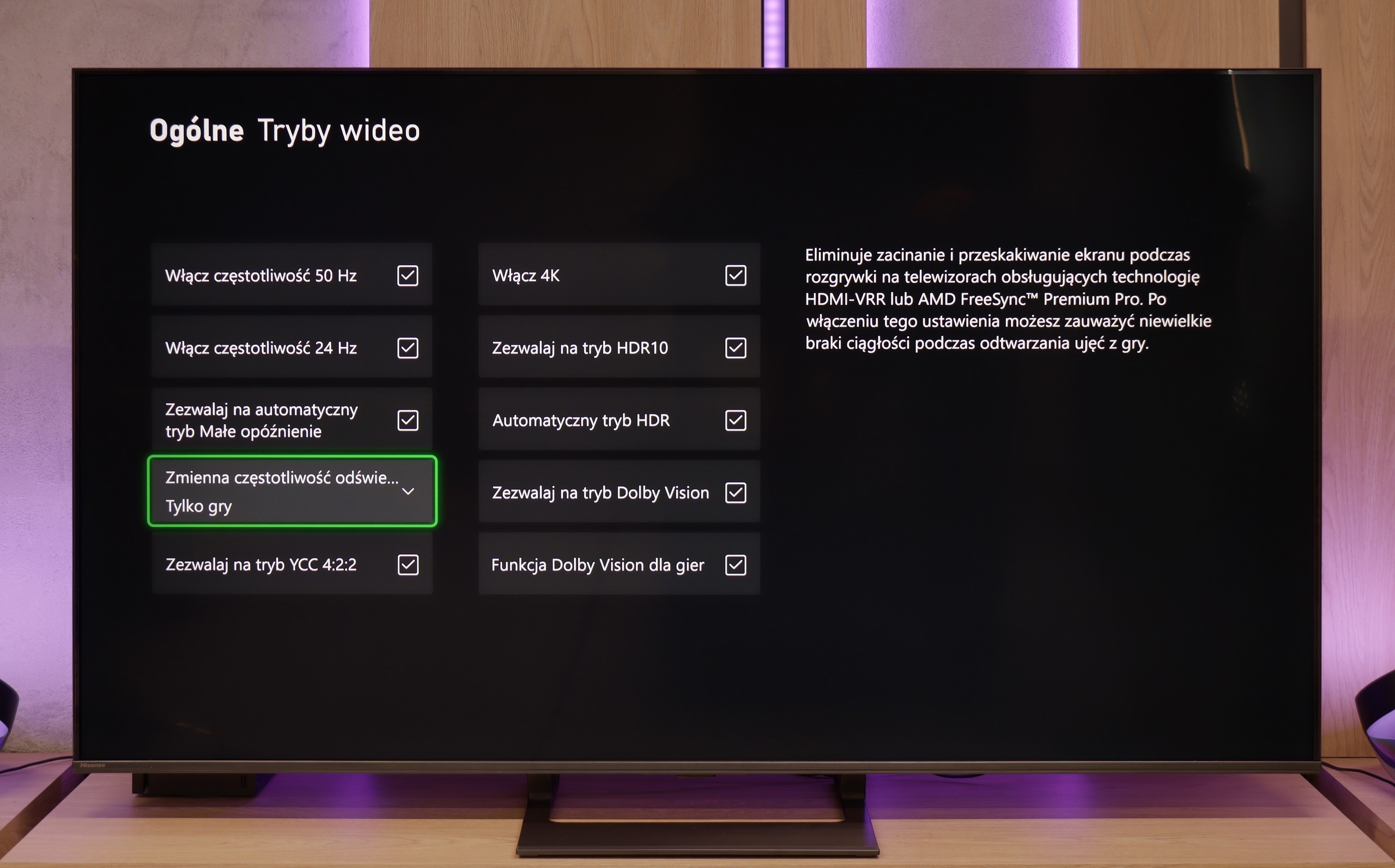

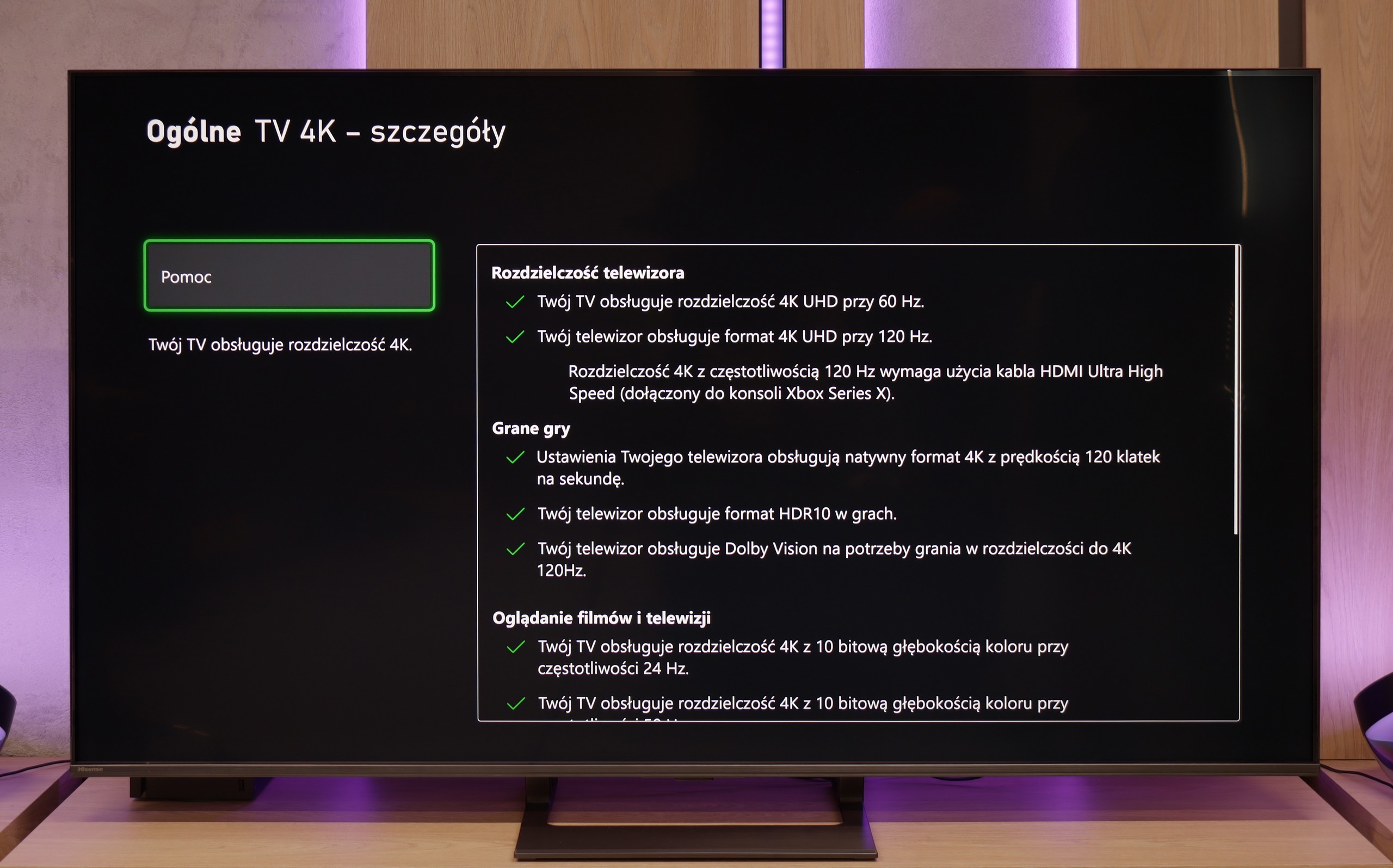

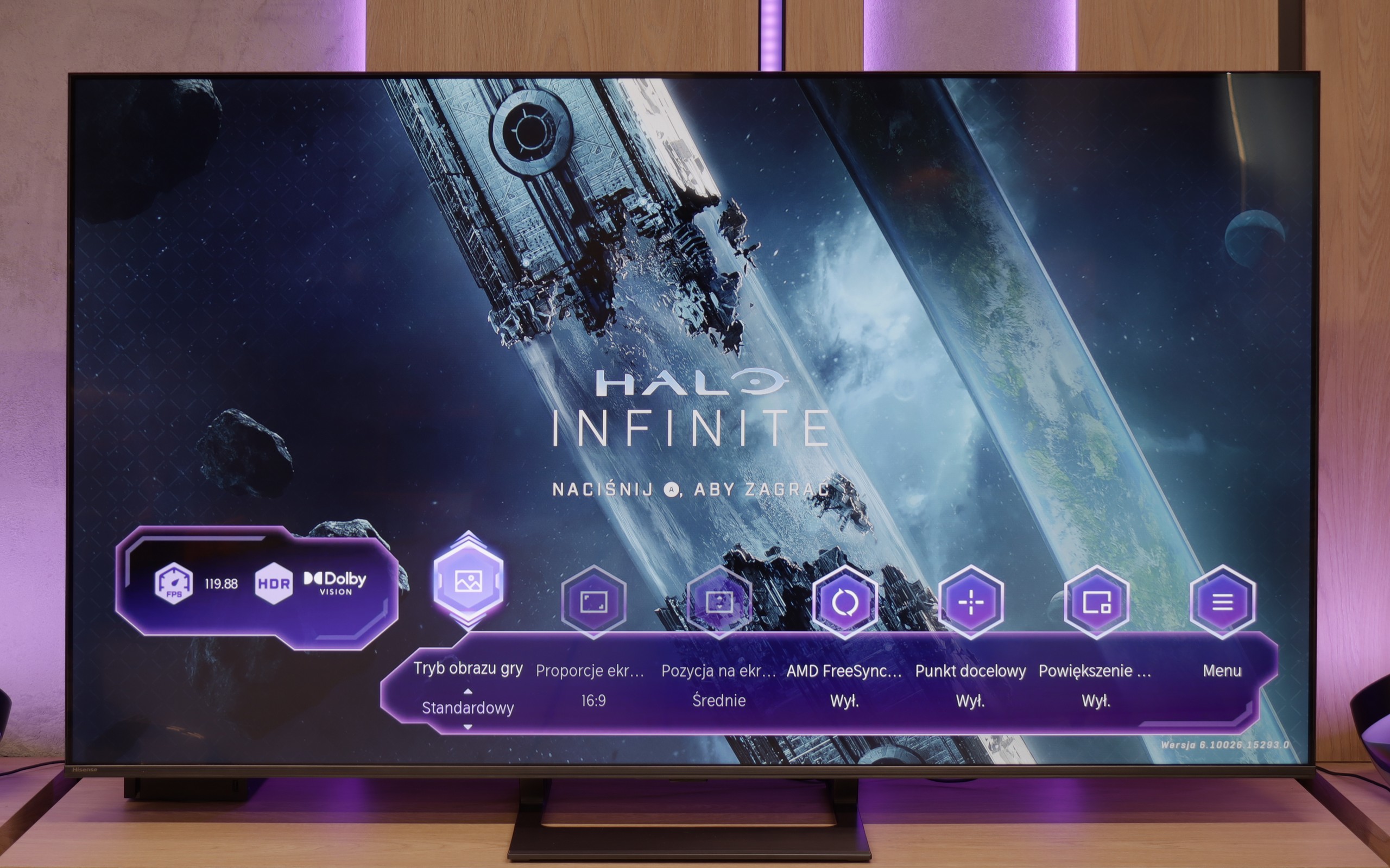

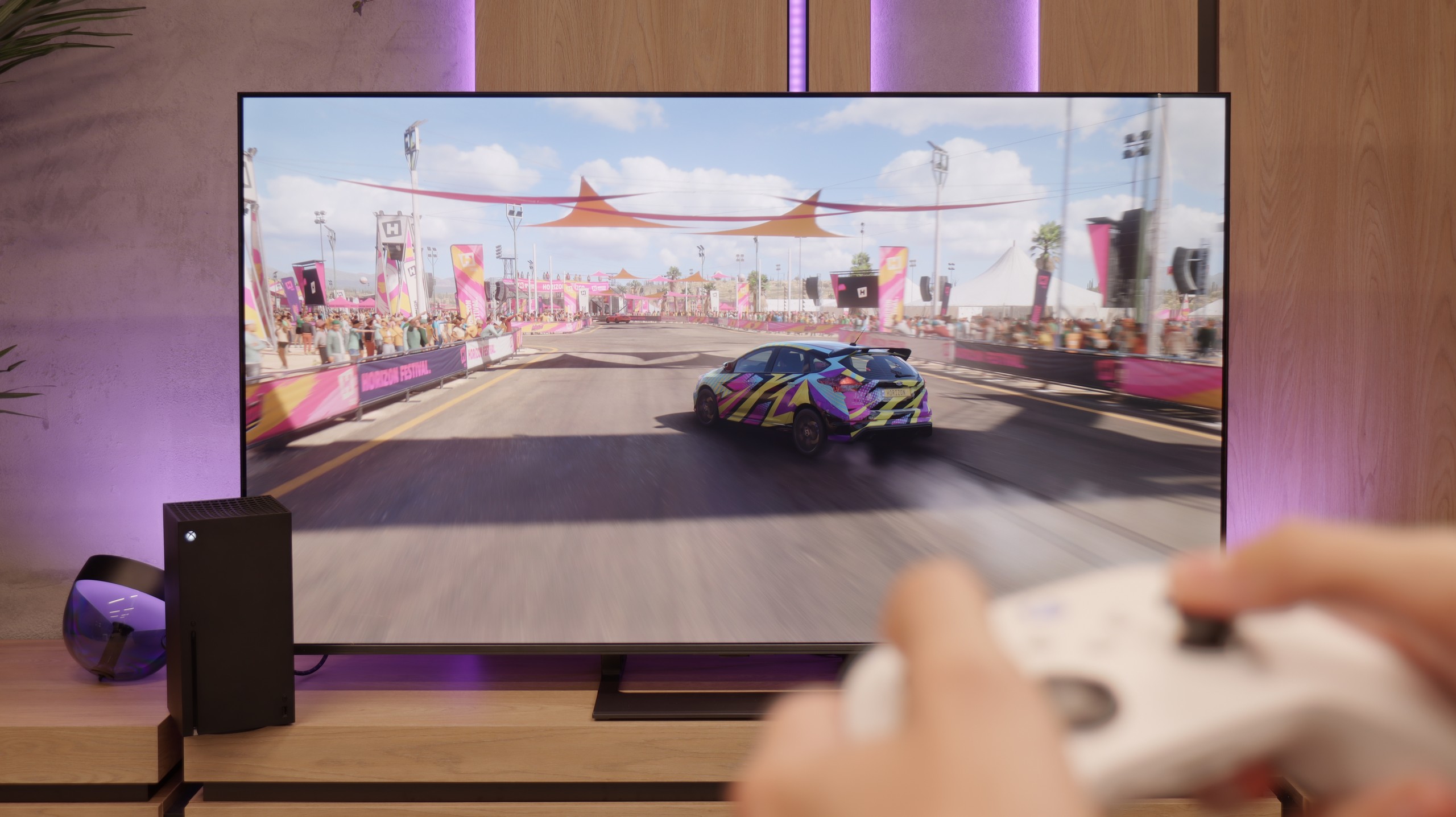

The Hisense E8Q does not hide its gaming pedigree. The specification alone reveals that we are dealing with a television that will work great as a gaming screen. Variable Refresh Rate (VRR)? Yes. Automatic low latency mode (ALLM)? It's there too. Additionally, there is impressive refreshment – 120 Hz in 4K or even 240 Hz in Full HD. Such a set is rare in this price segment. Everything works smoothly and without major surprises. The only missing element – like in the U7Q – remains support for HGiG. It's a pity, because this feature makes it easier to match the brightness curve to the capabilities of a particular television, improving visual consistency with the intentions of HDR game creators. Without it, one has to manually tweak the settings, which does not always yield a satisfying result.
Philips OLED820 is one of the most complete televisions for gamers. It practically has everything you could expect: two HDMI 2.1 ports with full bandwidth of 48 Gbps (too bad there aren't four), variable refresh rate VRR, automatic game mode ALLM, support for Dolby Vision in games, and a good implementation of the HGiG mode. The television also handles lower resolutions at 120 Hz without any issues, so you can count on great flexibility when choosing different picture modes on the console. Philips also adds Game Bar – a panel that allows you to change picture modes, add a crosshair, or view parameters. Although it looks quite clunky and is less polished than that of the competition, it serves its purpose. In practice, therefore, the OLED820, besides having a full set of four HDMI 2.1 ports, offers almost everything a gamer might need.
Input lag
9.7/10
10/10
SDR
HDR
Dolby Vision
The E8Q handles delays very well. For 120 Hz content, the input lag is super low – practically unnoticeable even for more demanding gamers. At 60 Hz, the values are a bit higher, but still comfortably within the "placebo" range – there's nothing to complain about. The biggest increase in lag was noted in Dolby Vision Gaming mode. The TV needs more time to process the signal in this mode, but even then, it does not exceed 30 ms. While these may not be perfect values, they won't pose any obstacles for most gamers – especially console gamers.
The input lag in the Philips OLED820 is truly at a reference level. The measurement showed values below 5 ms, which places it at the very top of the TVs available on the market. Even the Dolby Vision mode does not cause problems in this regard, which is quite a rare phenomenon. In practice, this means lightning-fast responses to every movement, no noticeable delays, and full comfort in dynamic games. In short, outstanding results that will please even the most demanding gamers.
Compatibility with PC
8.6/10
6.5/10
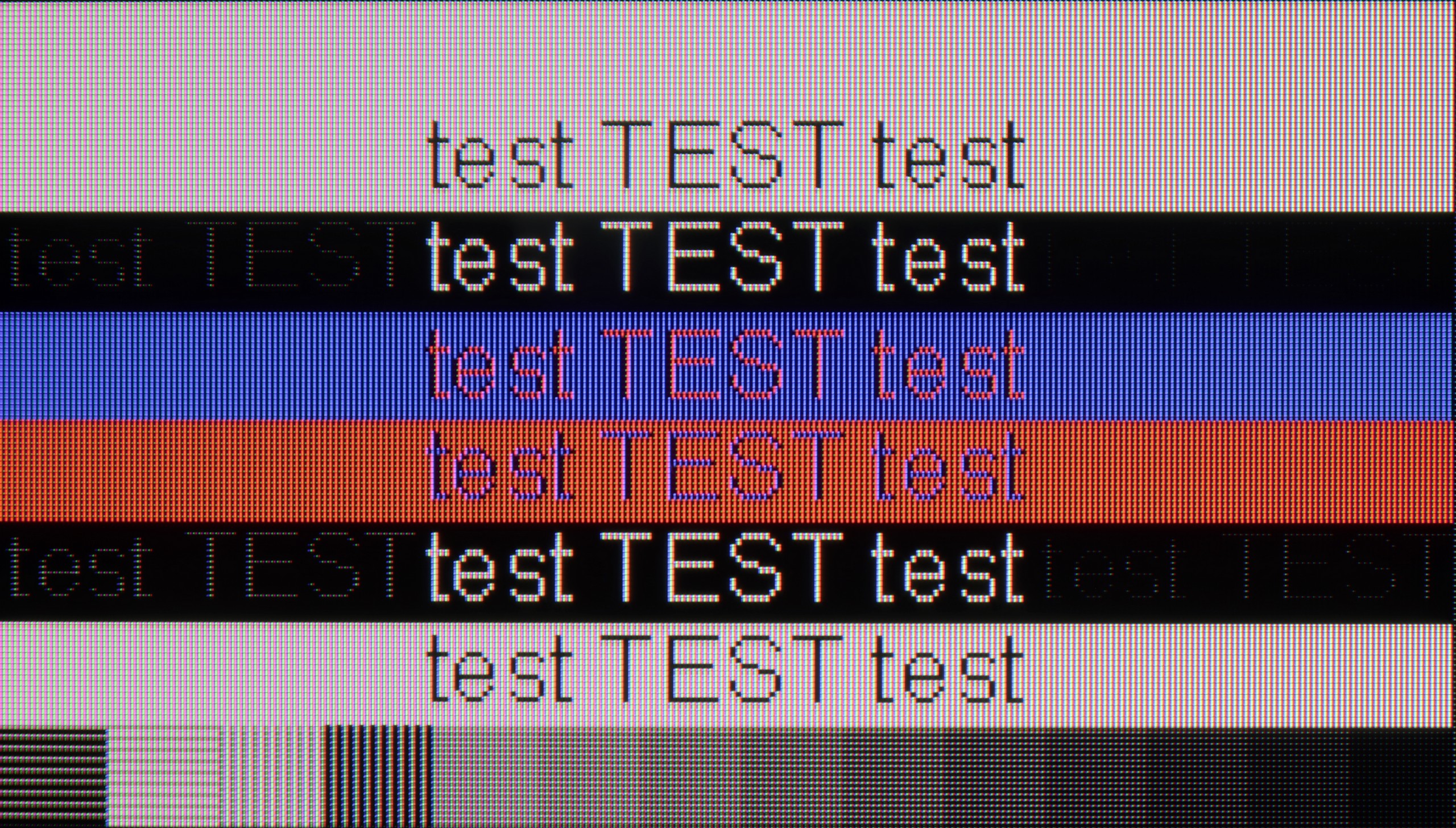

In terms of collaboration with the computer, the E8Q performs really well. It supports chroma 4:4:4 at full 4K resolution and at the highest refresh rate, so the readability of fonts – even the smallest ones – is at a very good level. There are minor blurriness issues with exceptionally thin fonts, but in everyday use, this is hard to consider a serious problem. A nice addition for PC gamers is the ability to achieve up to 288 Hz at lower resolutions. The E8Q communicates effortlessly with powerful graphics cards, making it an interesting choice not only for movies or consoles but also for gaming on a computer.
Collaboration with a PC for the Philips OLED820 varies depending on the application. For gaming, it performs exceptionally well: a high refresh rate of 144 Hz combined with G-Sync support provides smoothness and responsiveness that other televisions would envy. The situation is less favorable when it comes to text work. The lack of proper implementation of chroma 4:4:4 causes fonts on colored backgrounds to be slightly blurred, which significantly lowers work comfort. Therefore, it's hard to recommend the OLED820 as a screen for office work with text or numbers. It's a pity that the manufacturer didn't learn from last year's models and this flaw continues to persist.
Viewing angles
3/10
7.6/10
E8Q, like most TVs with a VA panel, looks best when we sit directly in front of the screen. In this position, one can count on deep blacks, good color saturation, and high contrast. Unfortunately, just moving slightly to the side causes the picture quality to suffer – colors start to fade, and blacks become more gray than black. This isn't surprising, but it's worth keeping in mind, especially if we plan to watch in a larger group from different positions in the living room. As a consolation – in return, we get significantly better black levels than with IPS panels.
The viewing angles on the Philips OLED820 are another advantage that should delight you. OLEDs have always been characterized by nearly perfect angles, so no matter where we look from, the image remains clear and readable. Indeed, the classic WOLED matrix does not match technologies like MLA OLED or QD-OLED, but it's still hard to criticize anything here. The angles are simply excellent.
TV efficiency during daytime
6.2/10
5.7/10
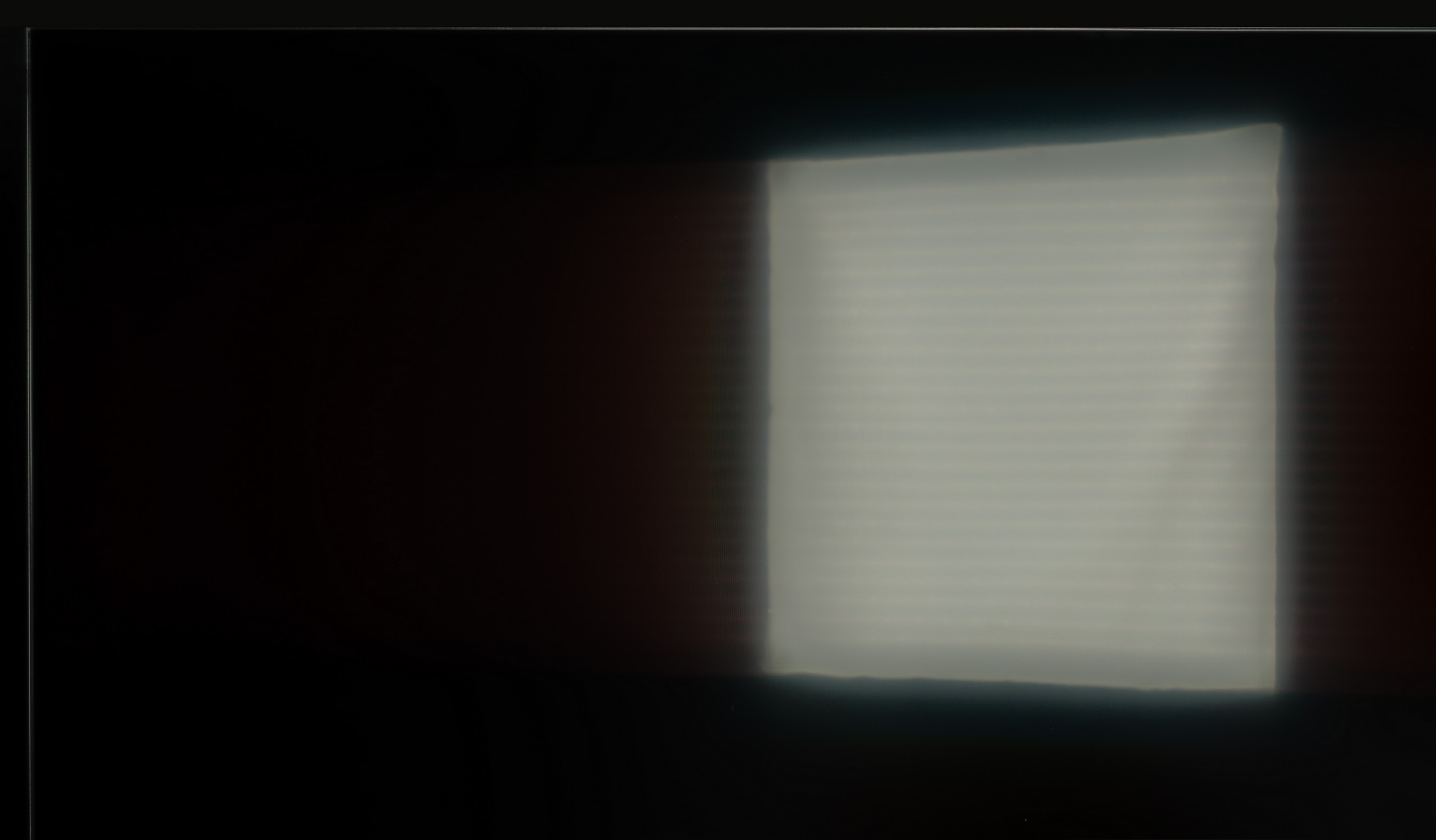

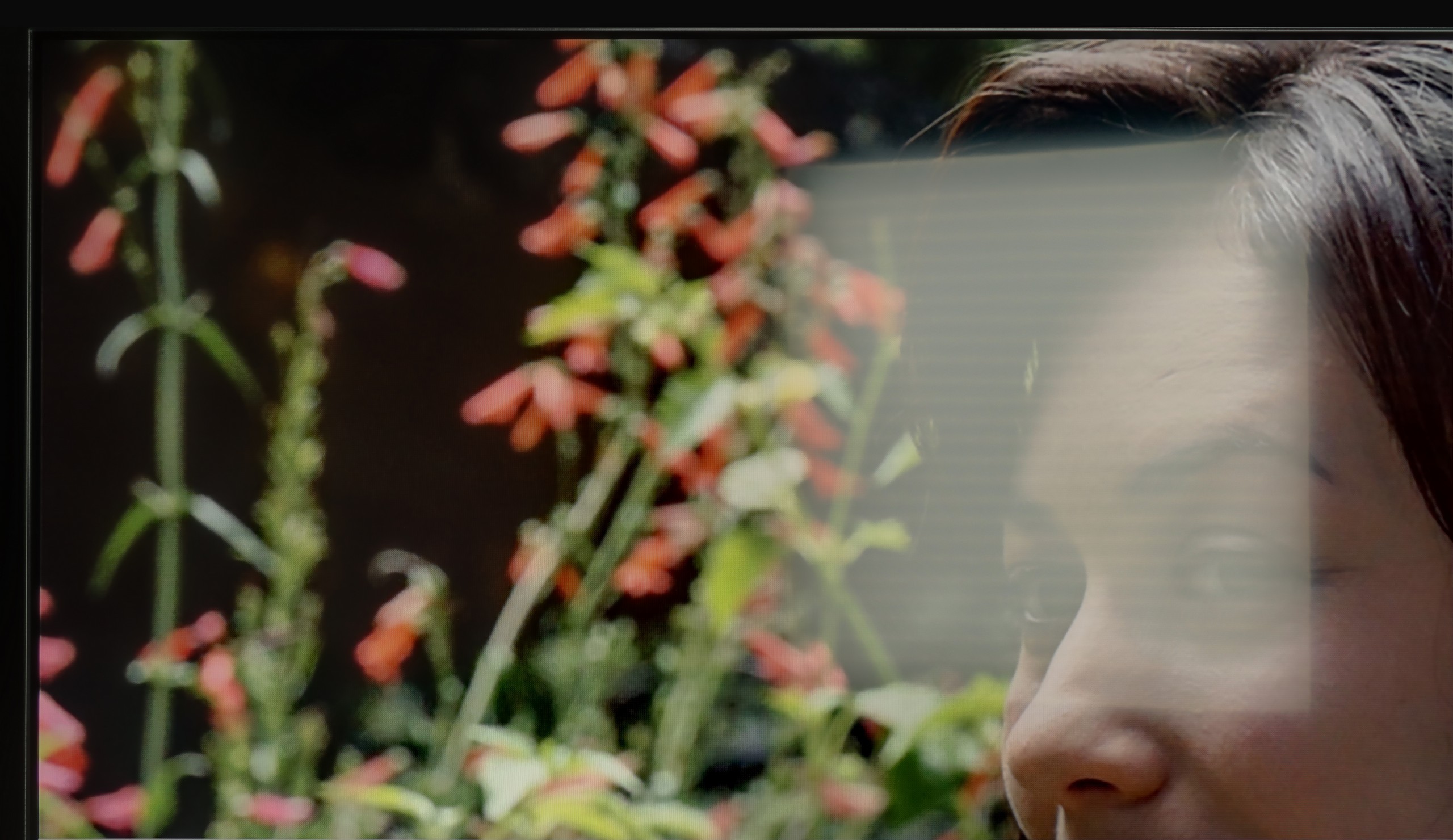

Matrix brightness
Average luminance SDR
Philips OLED820: 345 cd/m2
Hisense E8Q: 504 cd/m2
The Hisense E8Q is not afraid of bright interiors. Even when the full sun is shining outside, the television can maintain good image clarity. A brightness level of around 500 nits ensures that you can comfortably watch content during the day, without feeling that everything is drowning in glare. The satin screen coating also helps to pleasantly reduce reflections – it doesn't eliminate them completely, but limits them enough that they don't interfere with everyday viewing.
Details about the matrix
Subpixel Structure:
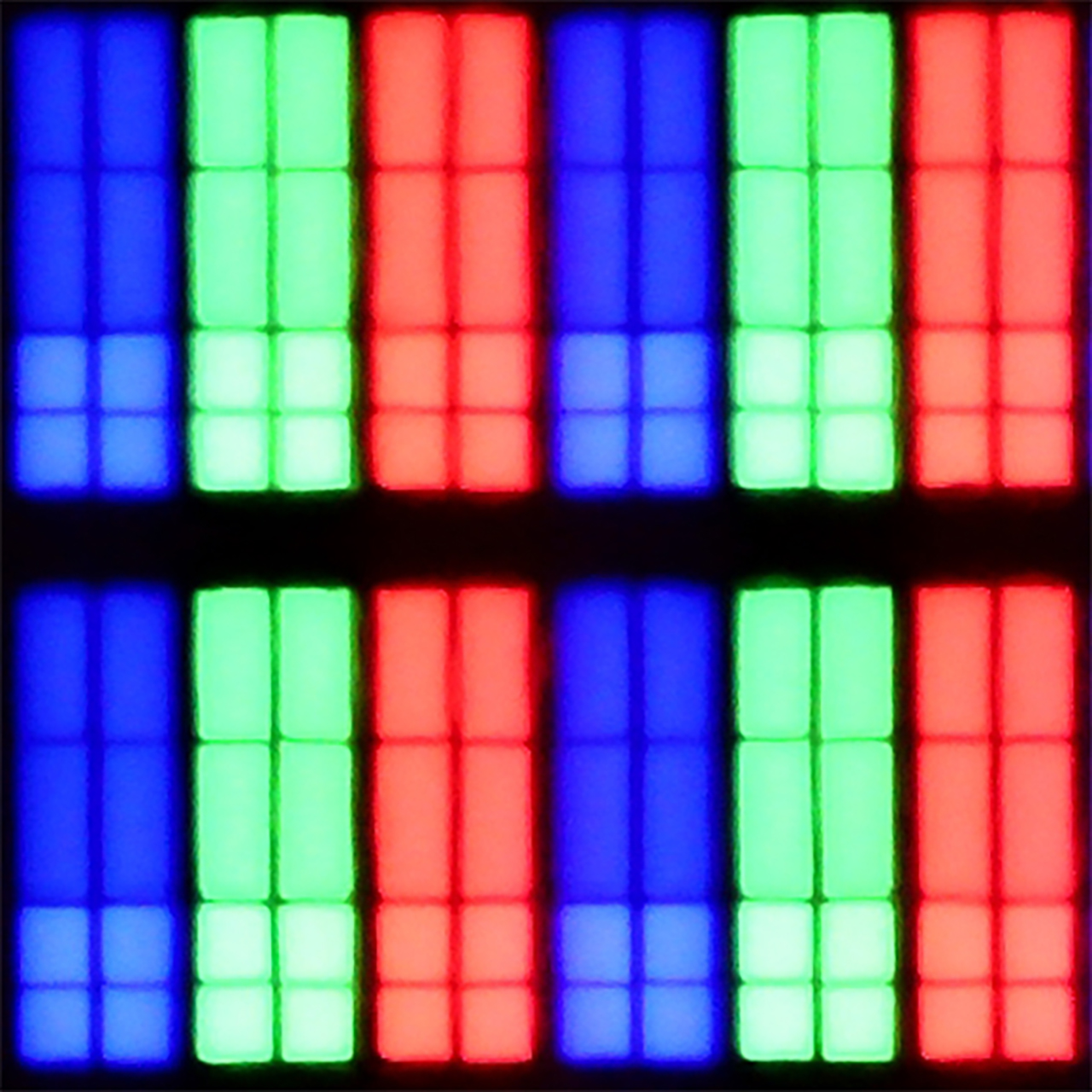
Panel uniformity and thermal imaging:
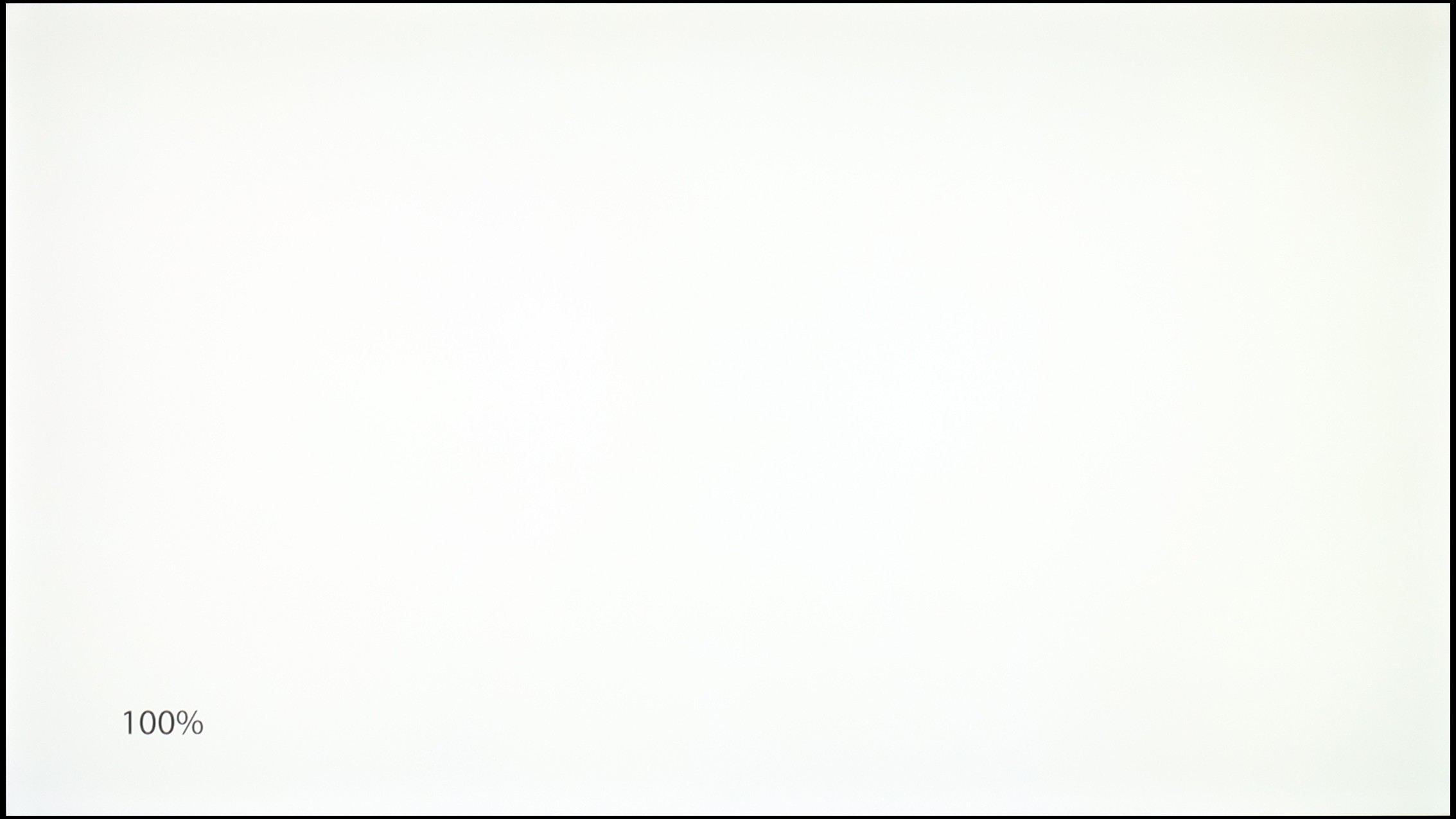

TV features
8.9/10
6.8/10
- HDMI inputs2 x HDMI 2.0, 2 x HDMI 2.1 48Gbps2 x HDMI 2.0, 2 x HDMI 2.1 48Gbps
- Other inputsRCA (Chinch)
- OutputsToslink (Optical audio), eARC (HDMI), ARC (HDMI), Mini-Jack (Headphones)Toslink (Optical audio), eARC (HDMI), ARC (HDMI), Mini-Jack (Headphones)
- Network InterfacesWi-Fi 2.4GHz, Wi-Fi 5GHz, Ethernet (LAN) 100MbpsWi-Fi 2.4GHz, Wi-Fi 5GHz, Ethernet (LAN) 100Mbps
- TV receptionDVB-T, DVB-T2, DVB-S, DVB-S2, DVB-CDVB-T, DVB-T2, DVB-S, DVB-S2, DVB-C
Classic features:
- Recording to USB (terrestrial TV)
- Recording programming
- Picture in Picture (PiP)
- RF remote control (no need to aim at the screen)
- Backlit remote control
- Teletext
- Audio only mode
- Bluetooth headphones support
- Simultaneous Bluetooth headphones & TV audio
Smart features:
- AirPlay
- Screen mirroring (Windows Miracast)
- Voice search
- Voice search in native language
- Ability to connect a keyboard and mouse
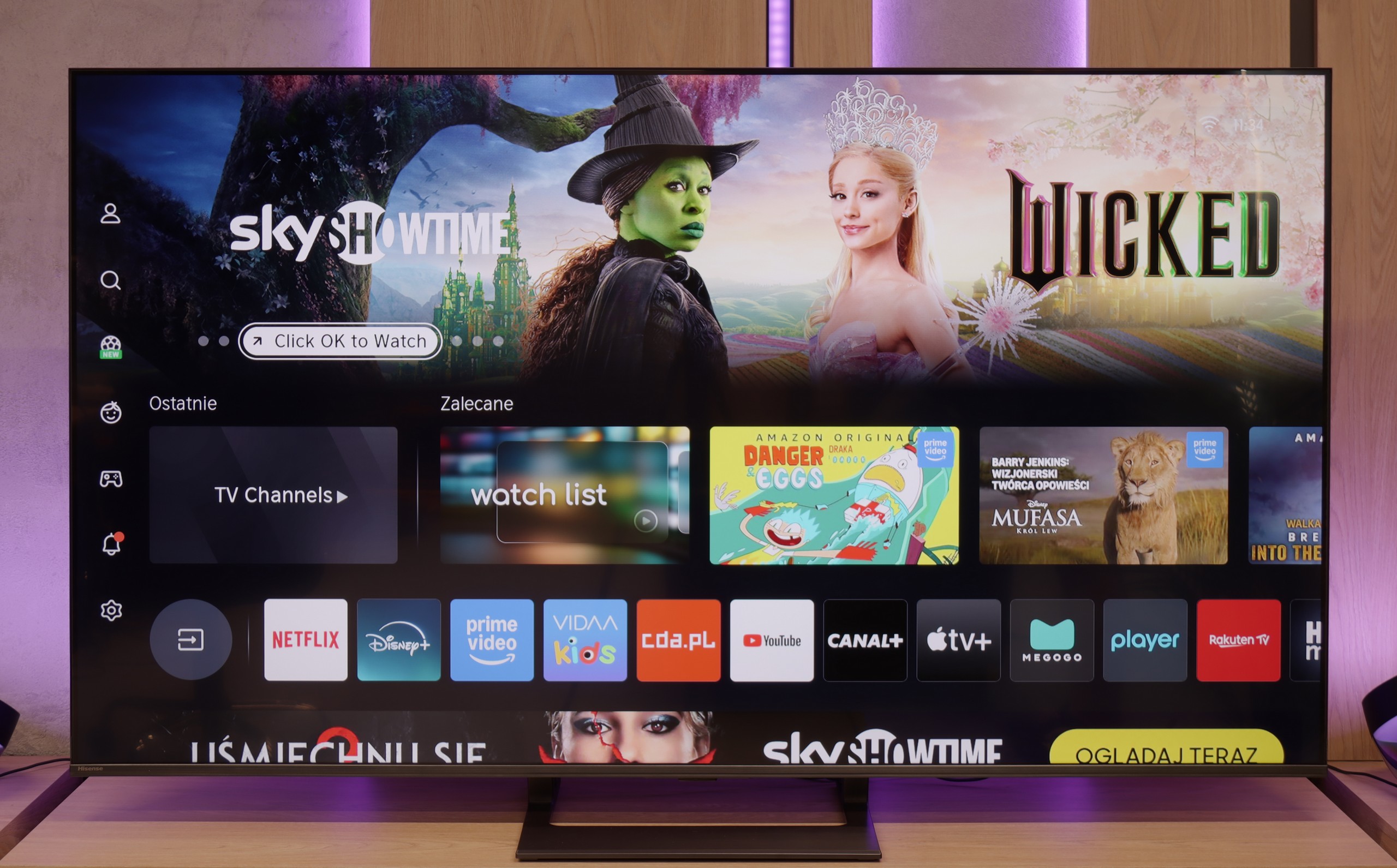
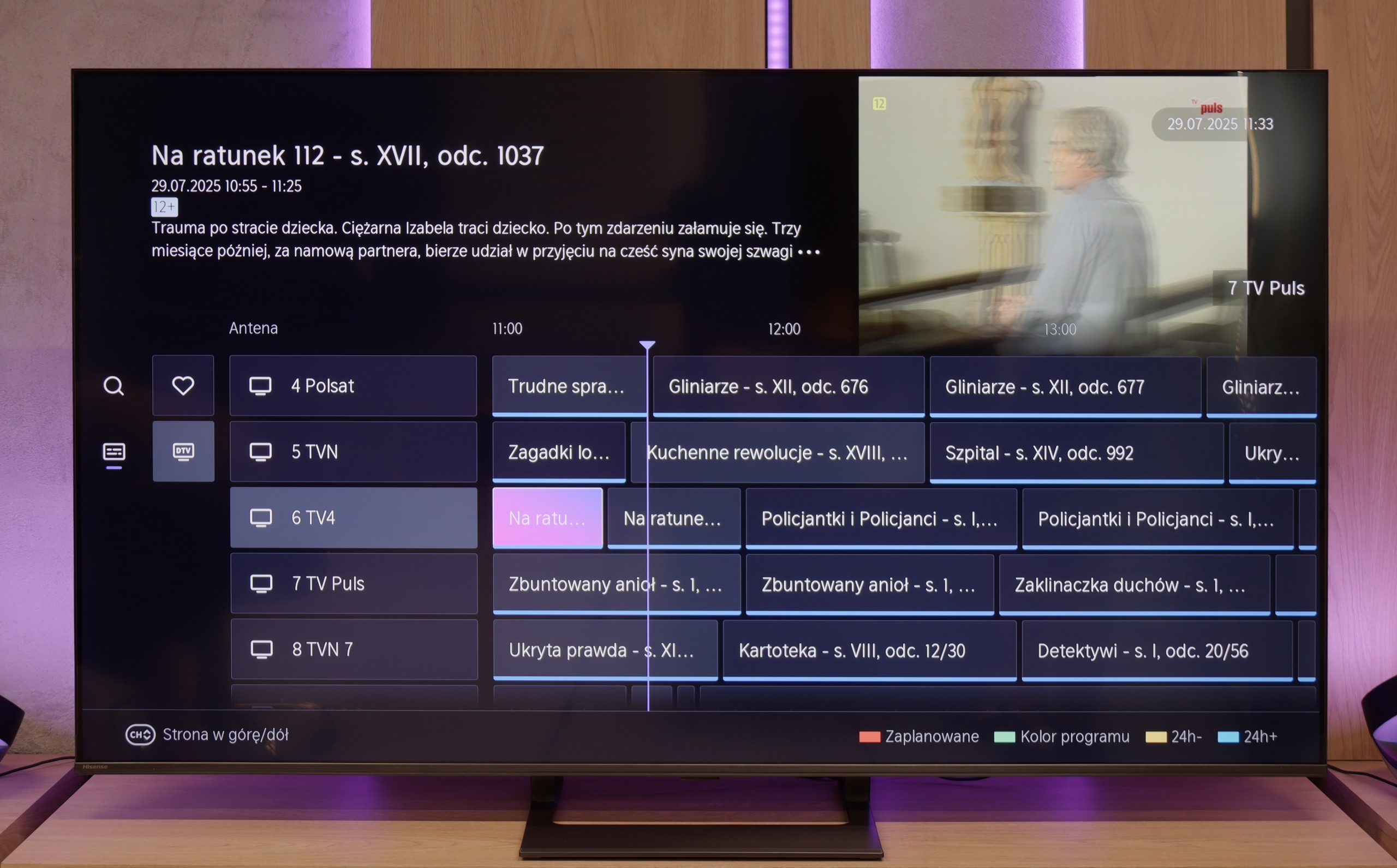
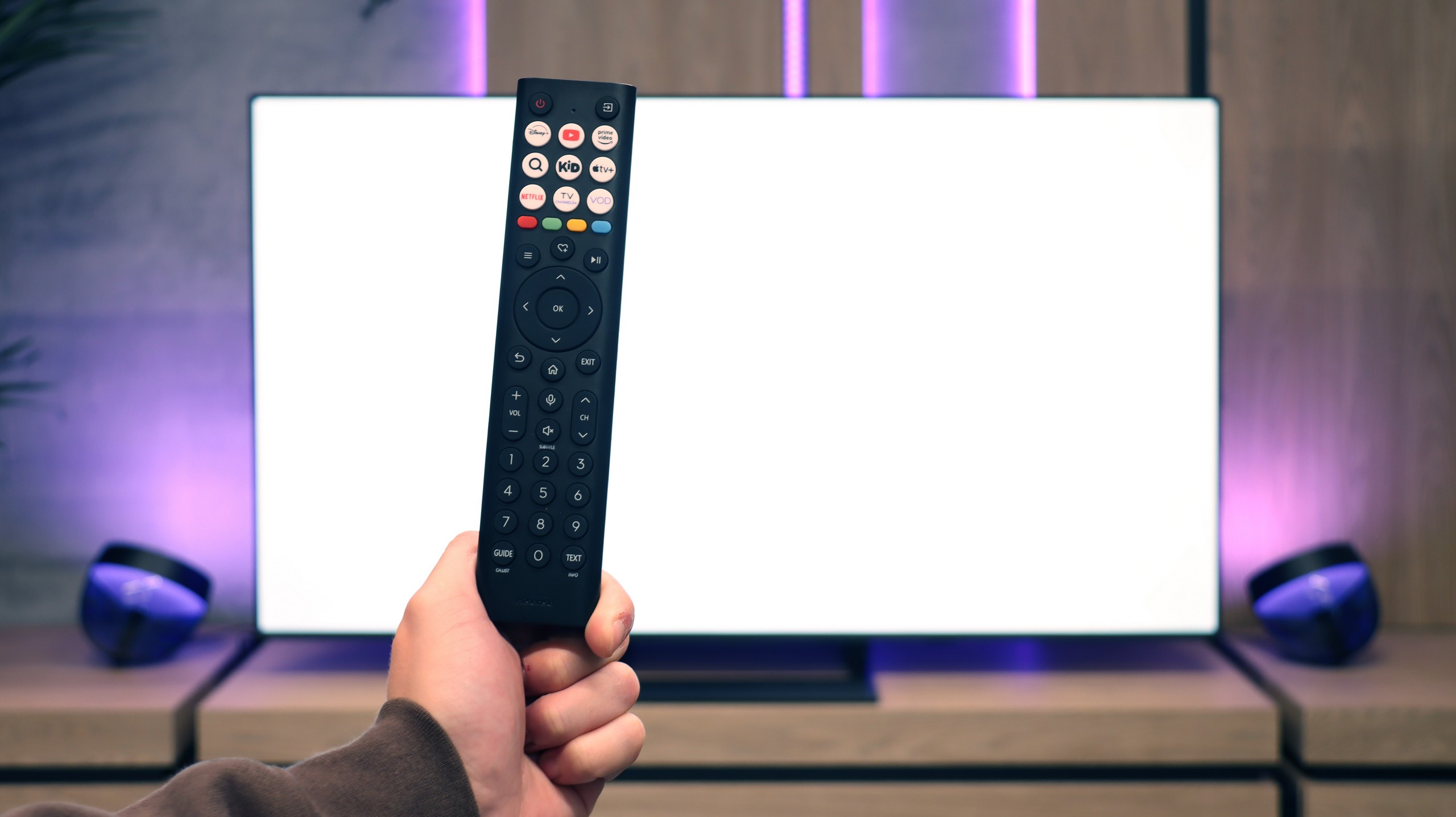





Classic Features – E8Q
The Hisense E8Q is not only equipment for gamers or movie enthusiasts – it can also serve as a daily television for the entire family. We can record programs to USB, connect headphones or speakers via Bluetooth, and the entire interface – including the channel guide – is clear and easy to use. It only lacks the PiP function, but aside from that, the set of classic features is truly complete.
Smart TV – VIDAA System
The E8Q runs on the VIDAA system, which is becoming more refined year by year. Voice search in Polish works flawlessly, and it's easy to cast from your phone (AirPlay and screen mirroring). The system operates smoothly, without any hiccups, although – as is often the case with closed platforms – there may occasionally be one or two less popular apps missing. Therefore, it’s worth checking before purchase to see if everything we use daily is available there.
GoogleTV on OLED820
Philips OLED820 runs on the Google TV system, which immediately places it among the televisions that truly offer freedom of use. It's a fantastic platform that needs no introduction – you'll find almost an endless number of apps, from popular VOD services to niche programs or games. Google TV also allows you to customize the home screen, tailoring content to your preferences, so the television actually "learns" your viewing style. A huge plus is also Google's voice assistant – quick, natural, and effective. It can understand even less obvious questions, and in practice, it works significantly better than many competitors. Unfortunately, there was a hiccup – the screen mirroring function simply didn’t work during testing. This can be considered a minor issue, but in 2025, things like this just shouldn't happen.
Classic Features of OLED820
When it comes to classic additions, the OLED820 doesn't strive for conservative notes. On one hand, we get a backlit remote control with a numeric keypad that is quite well organized and comfortable to use. On the other hand, you have to aim it at the screen because it operates on infrared, which is more reminiscent of equipment from a decade ago than a modern television. It also lacks a few features that are often found in competitors – there's no USB recording from tuners or a PiP mode. A nice touch among classic solutions is the mini jack analog input for headphones. This is a rarity today, and it can prove useful – whether for a senior with an additional headphone station or for someone who would like to connect older speakers.
AmbilightTV OLED820
You also can't overlook Ambilight, a feature that is a hallmark of Philips. This solution impacts not only the television's appearance but also the reception of content. The lighting system can be set in various ways, from a multicolored mode that dynamically follows the image to calmer, static backlighting. We definitely recommend the latter option because the gentle light behind the screen makes the viewed content combined with the OLED matrix look even deeper and more engaging. It's a simple yet very effective addition that has given Philips televisions character for years.
Playing files from USB
8.2/10
9.5/10
Supported photo formats:
Maximum photo resolution:
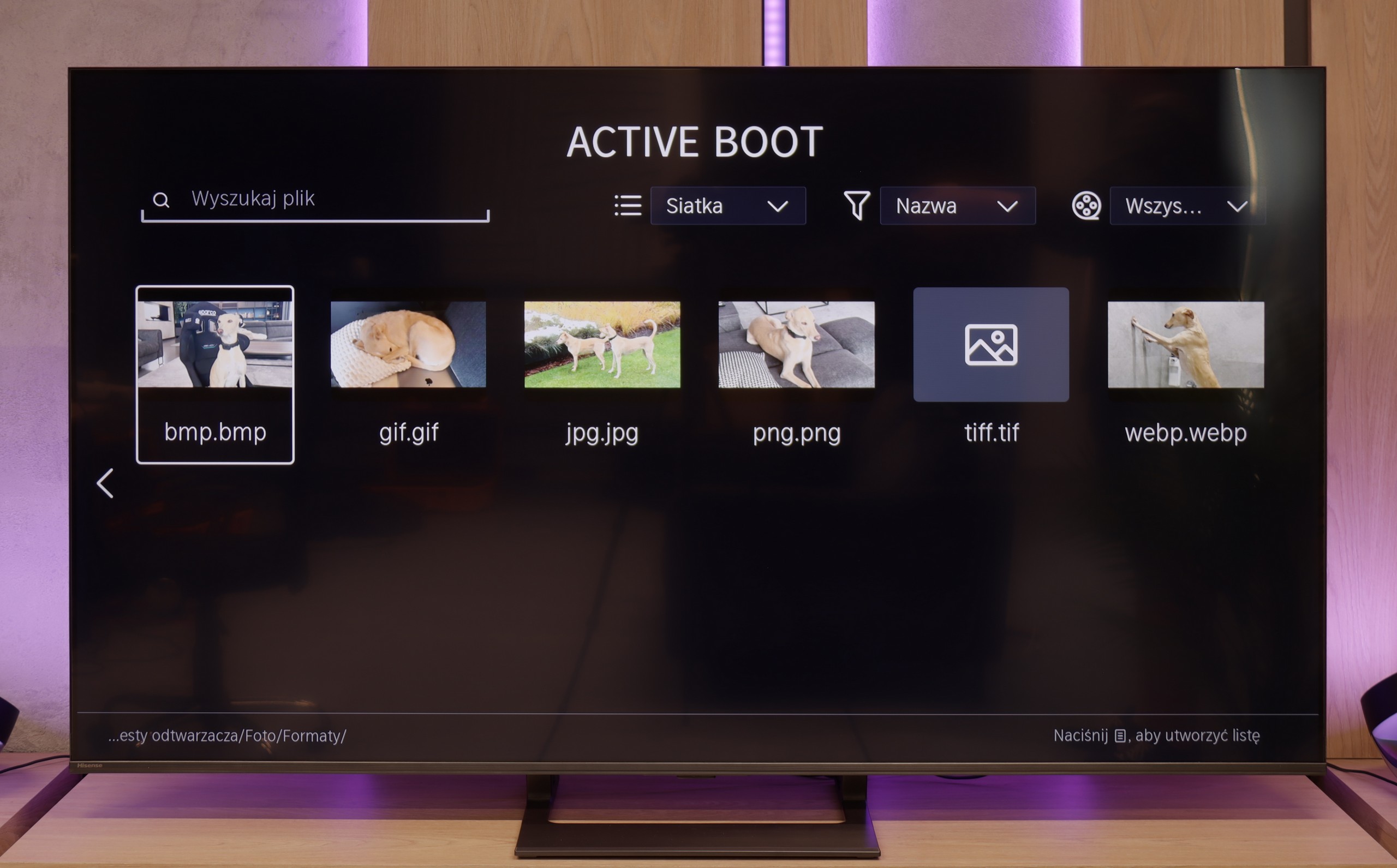

The built-in media player in E8Q performs quite well. It supports most popular video and audio formats, and files from USB drives or external disks play without major issues. Polish characters? They are supported. Subtitles? They work. The only minor drawback is the occasional problem with displaying high-resolution images – especially those from cameras or smartphones. So if you plan to show vacation photos on a large screen, it’s worth checking in advance whether they will all load correctly from the drive’s memory or USB stick.
The Philips OLED820 has a built-in file player with USB, which at first glance looks quite clunky, but in practice, it works surprisingly well. One could even say that it is one of the best built-in players available in televisions. It handles virtually every type of file: photos, videos, or music, with minor exceptions, most of which are also not supported by the competition. And if someone still feels something is missing, there is always the option to install the VLC app from the Google Play library and the problem disappears.
Apps
7.7/10
9.6/10














































Sound
7.2/10
7.7/10
- Maximum volume85dB81dB
- Dolby Digital Plus 7.1
- Dolby True HD 7.1
- Dolby Atmos in Dolby Digital Plus (JOC)
- Dolby Atmos in Dolby True HD
- DTS:X in DTS-HD MA
- DTS-HD Master Audio
Unfortunately, the Hisense E8Q did not leave the best impression on us. Although on paper it has speakers with a power of 40 W (which is only slightly less than the 50 W in the U7Q), in practice, the difference is significant—and unfortunately not in favor of the E8Q. During testing, it quickly became apparent that something was off. When the volume was raised above 40-50%, the entire back housing began to resonate, and unpleasant crackling sounds emerged from the television. Even during regular viewing, it was hard not to notice this, and definitely hard not to hear it. In this form, it is difficult to talk about listening comfort. We do not rule out that this was a problem with a specific test unit, but nonetheless—it is worth keeping this in mind. If good sound is important to you, consider connecting a soundbar or… stick with the U7Q, which performs significantly better.
The Philips OLED 820 features a built-in 4.1 speaker system with a total power of 70 W. At the back of the chassis, there is a subwoofer that provides quite solid and deep bass. The classic speakers responsible for the rest of the range are located at the bottom of the television, which means that the sound does not always propagate as we would like. However, the overall sound quality can be considered acceptable – series, television programs, or occasional music listening perform well, with slight bass support. This should be sufficient for daily use, although we still recommend purchasing even an inexpensive soundbar, which will significantly enhance the user experience.
Acoustic Measurements
85dBC (Max)
75dBC
81dBC (Max)
75dBC


